Exercise 9 - Regional Anatomy of the Head and Neck
1/106
There's no tags or description
Looks like no tags are added yet.
Name | Mastery | Learn | Test | Matching | Spaced |
|---|
No study sessions yet.
107 Terms
number of cranial bones
8
number of facial bones
14
ethmoid bone
found deep to nasal, lacrimal, and frontal bones
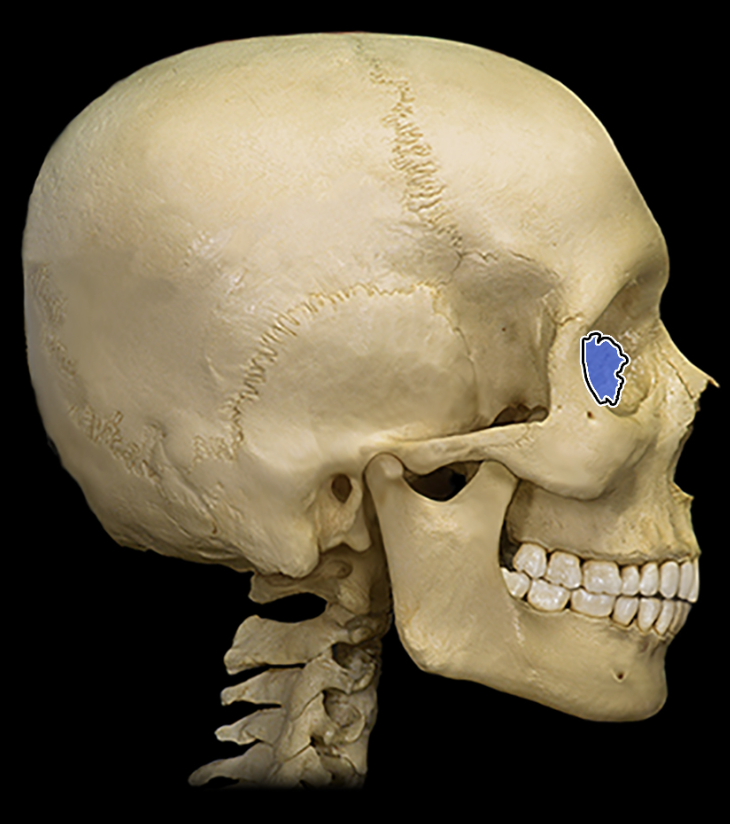
frontal bone
forms anterior and part of the superior surfaces of skull
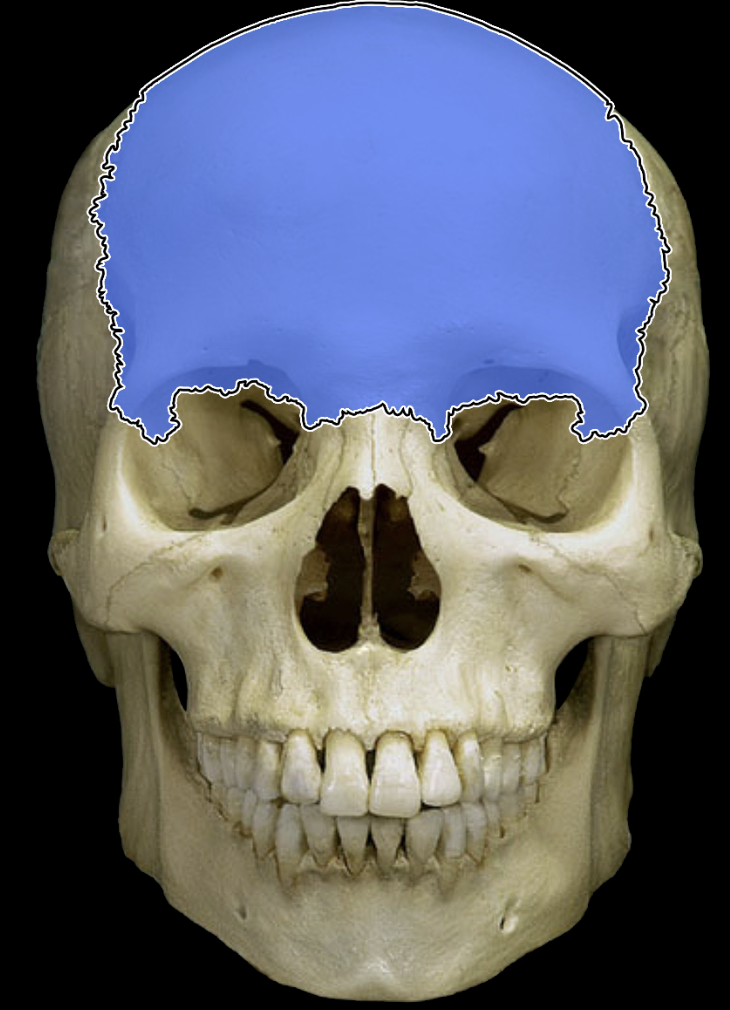
Inferior nasal concha
2 of them; projection of bone on the inferior and medial surface of the nasal cavity
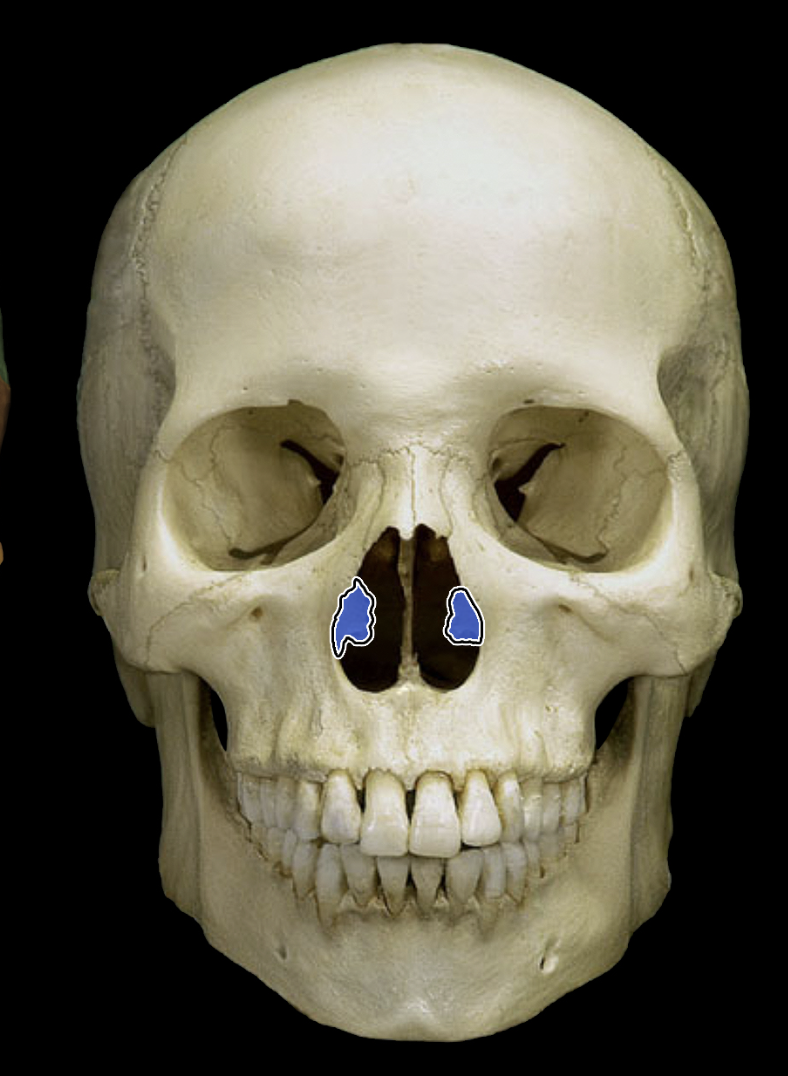
lacrimal bone
2 of them; lateral and posterior to the nasal bones, contain a depression for tear drainage
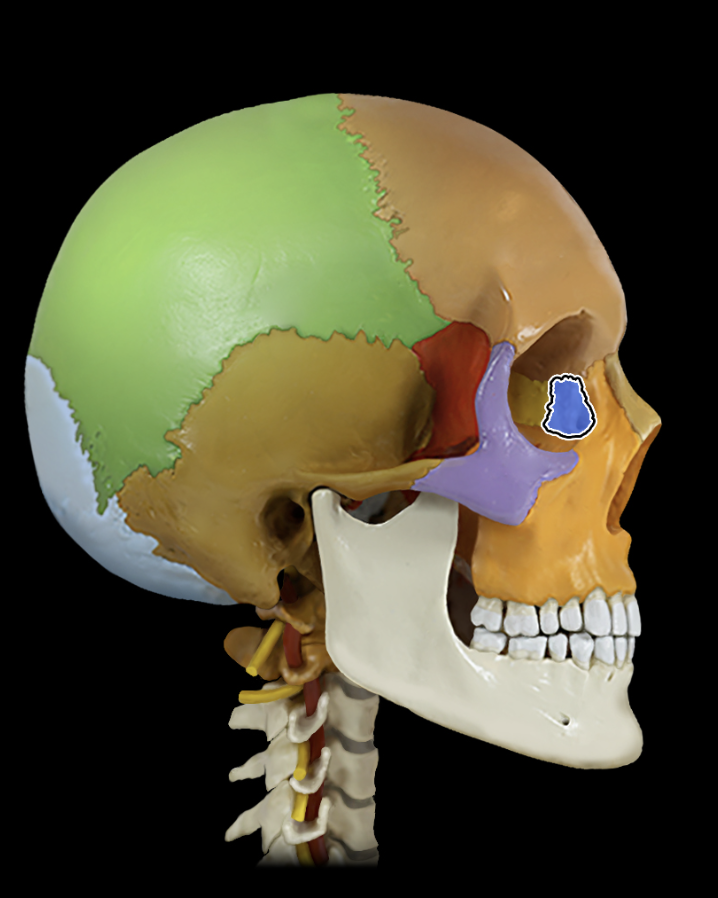
Mandible
jaw bone, inferior to maxilla, attachment for inferior row of teeth
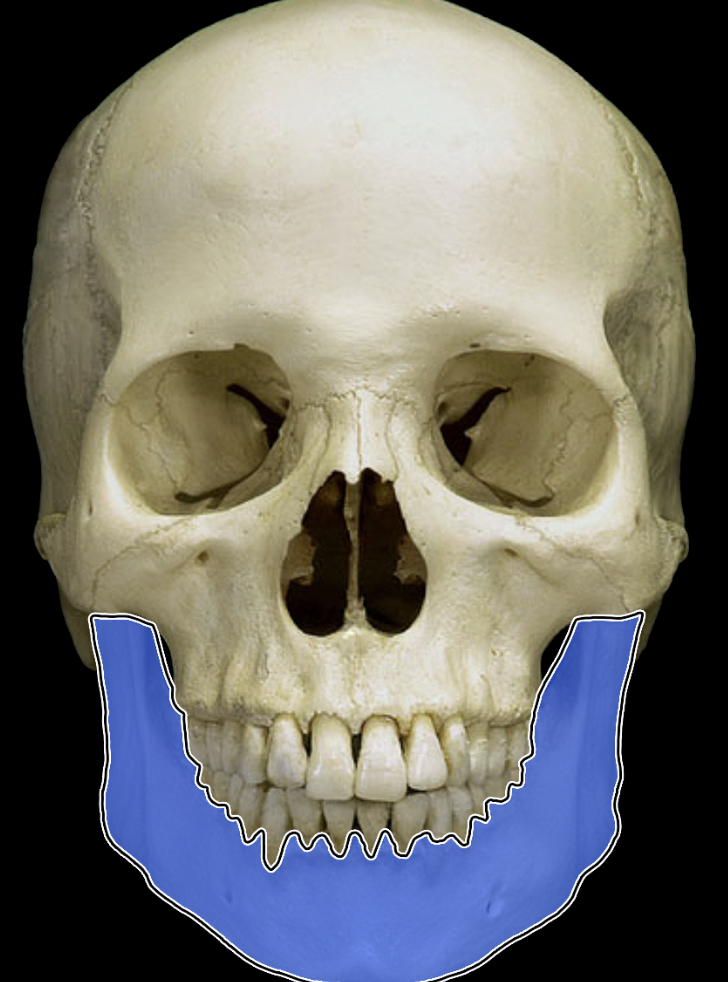
Maxilla
2 of them; forms the anterior portion of the superior boundary of the oral cavity, attachment for the superior row of teeth
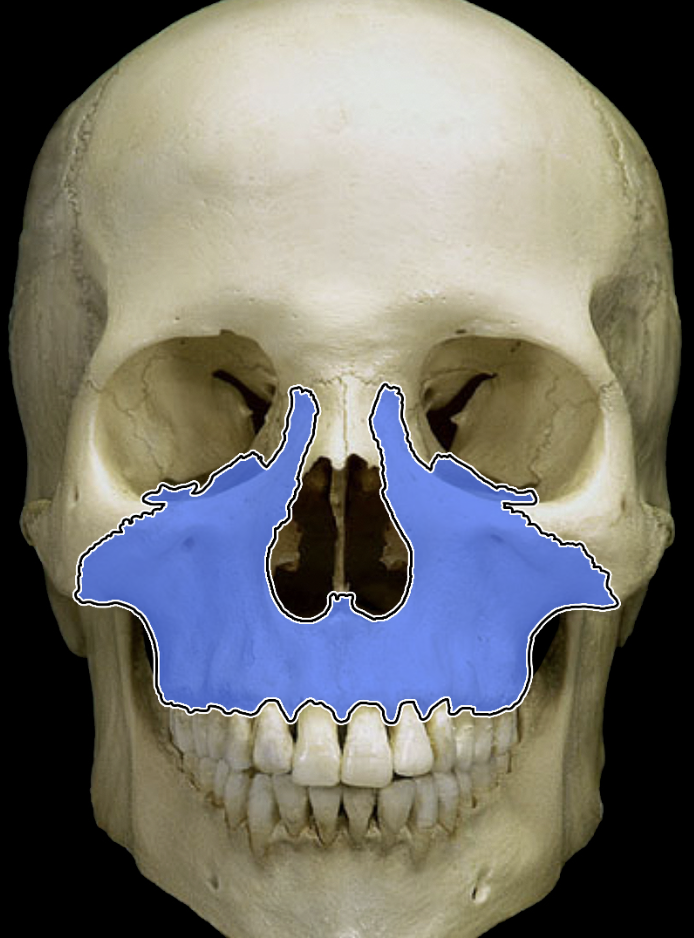
Nasal bone
2 of them; form the anterior portion of the nasal cavity
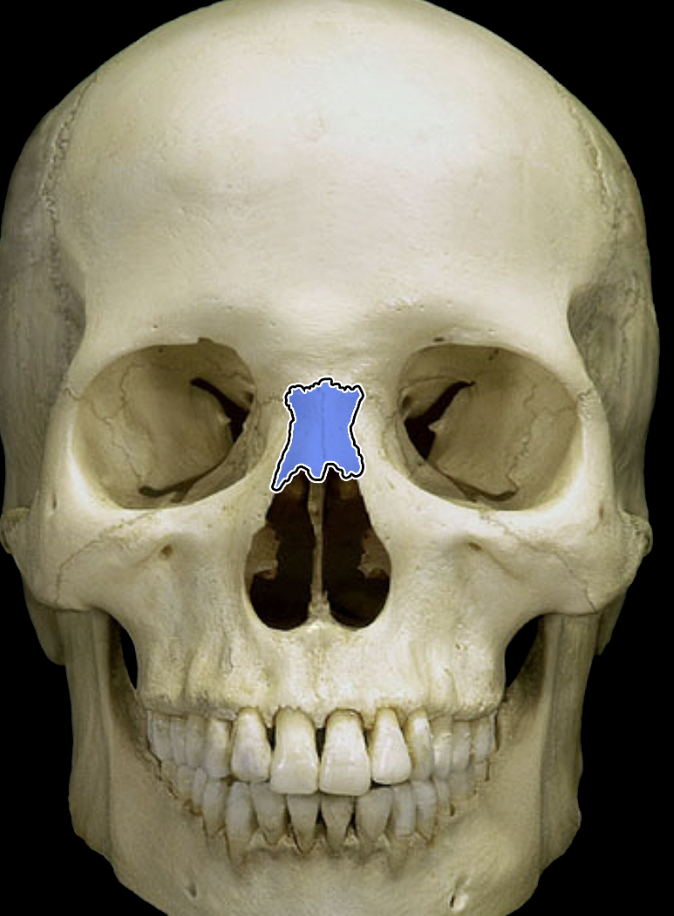
Palatine bone
2 of them; form the posterior portion of the superior boundary of the oral cavity
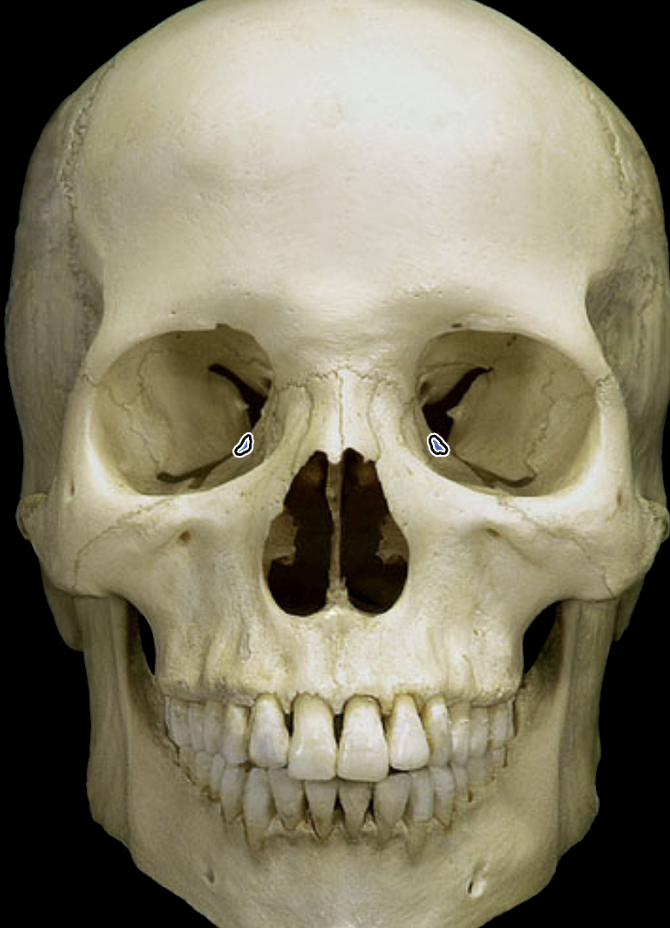
Parietal bone
left and right ones; form the lateral and superior portions of the skull, posterior to the frontal bone
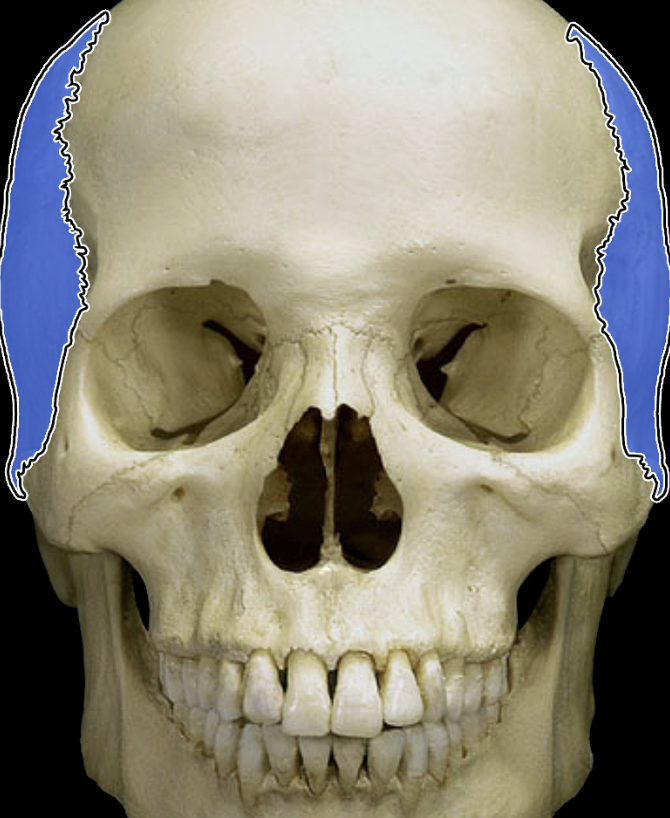
Sphenoid bone
connects with all other cranial bones, forms part of the orbit and inferior surface of the skull
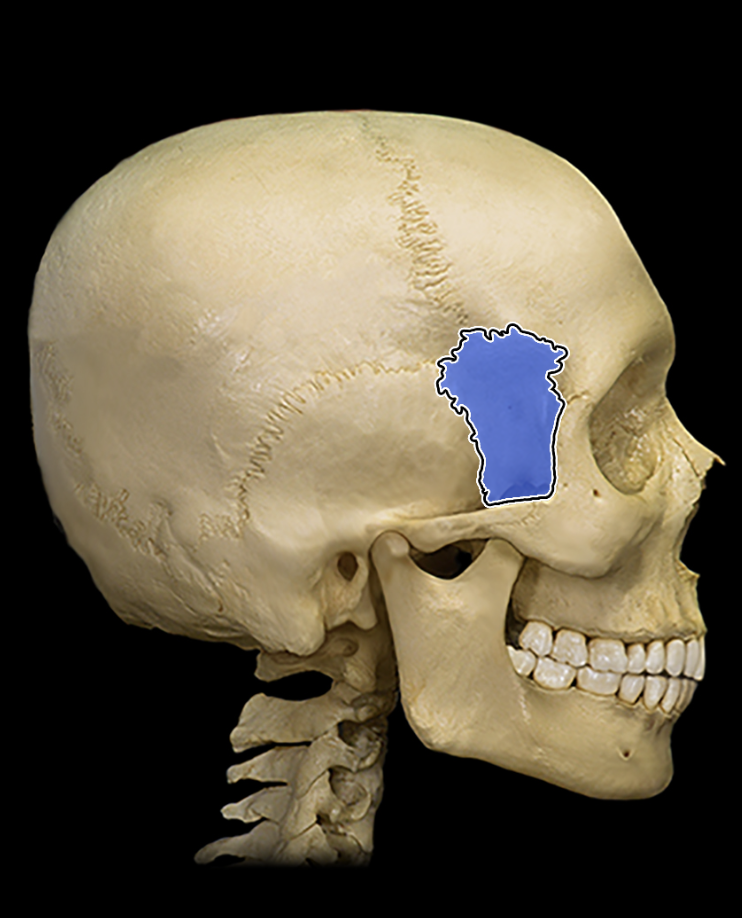
Temporal bone
left and right ones; form the lateral surface of the skull, inferior to the parietal bones and anterior to the occipital bone
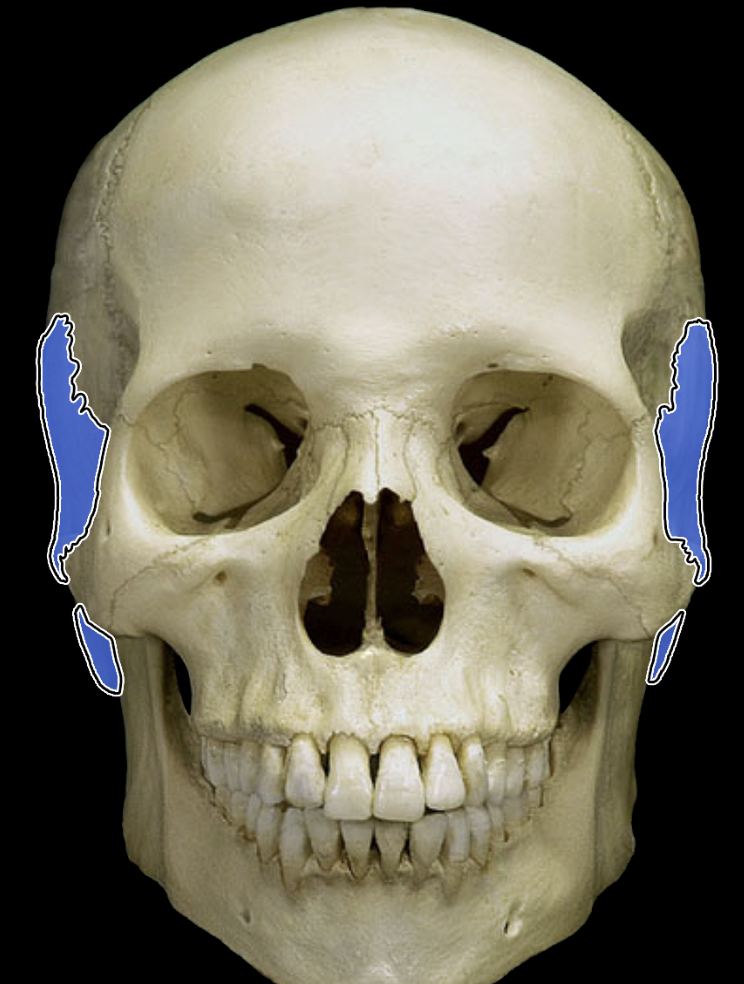
Vomer
found in the lower, posterior nasal septum. can also be seen from posterior view
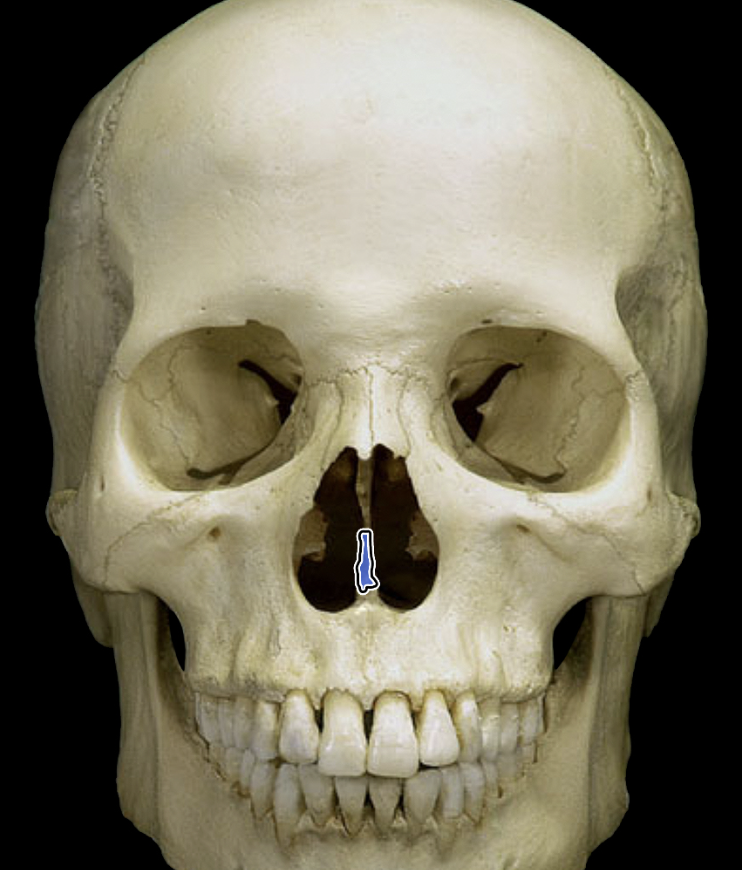
Zygomatic bone
2 of them; posterior to the maxillae and anterior to the temporal bone; cheek bones
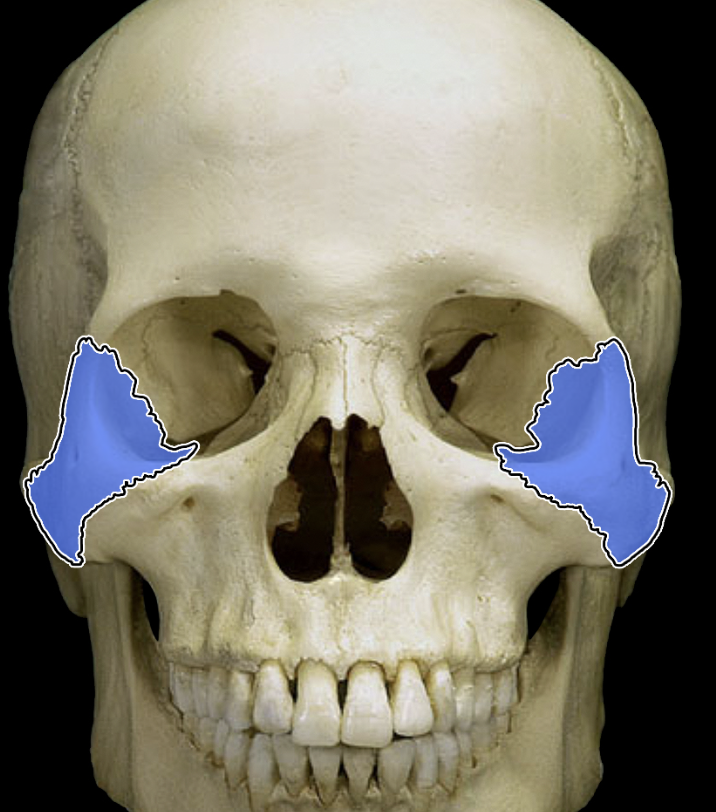
occipital bone
forms the posterior and inferior surfaces of the skull
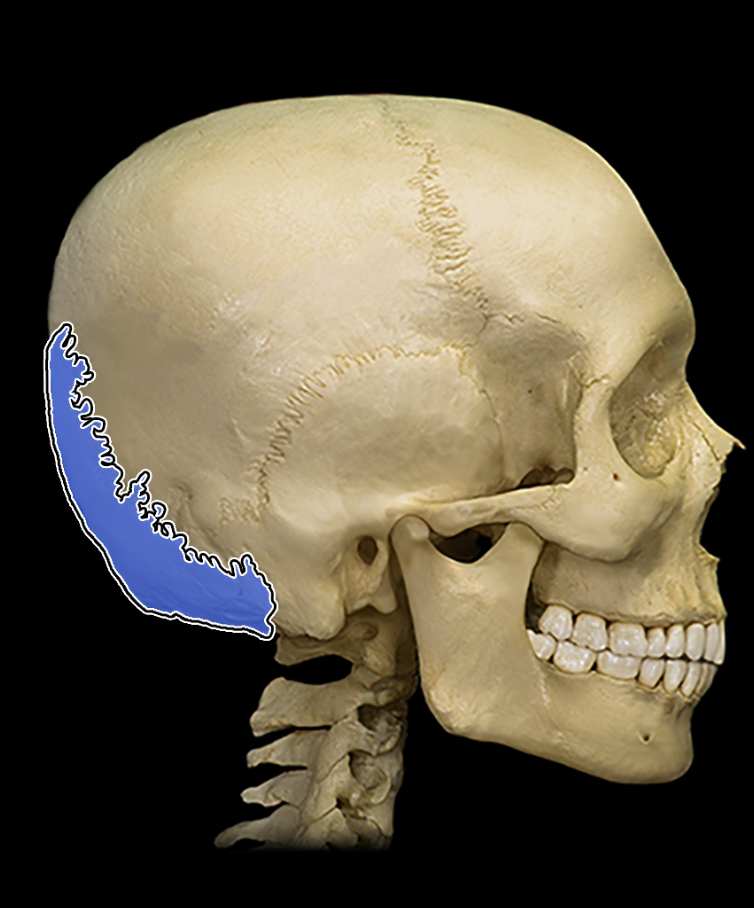
Lambdoid suture
joint between parietal and occipital bones
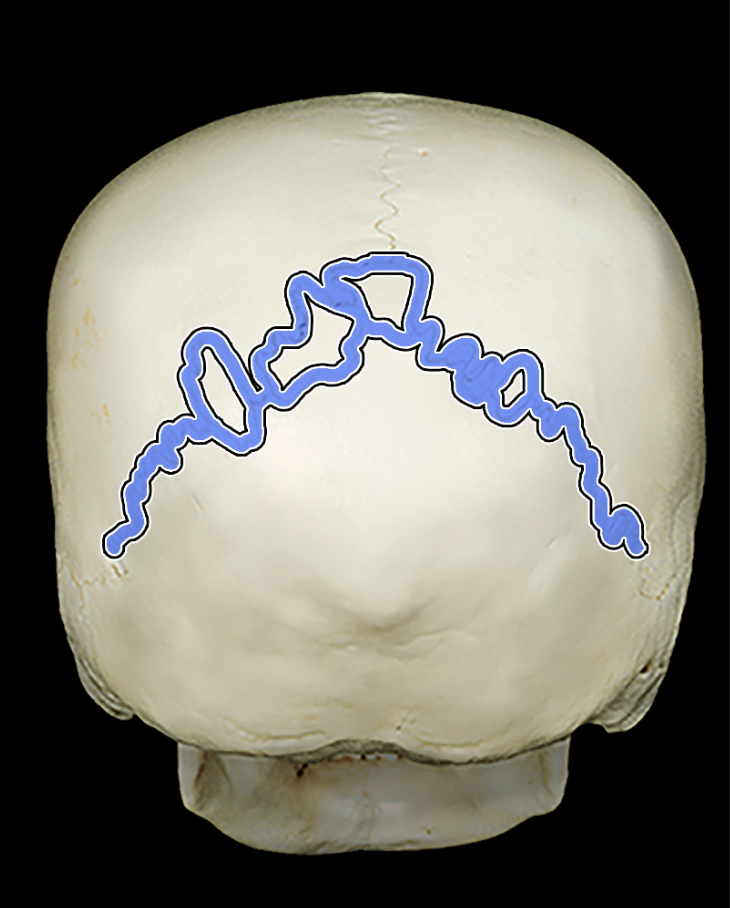
Sagittal suture
joint between parietal bones
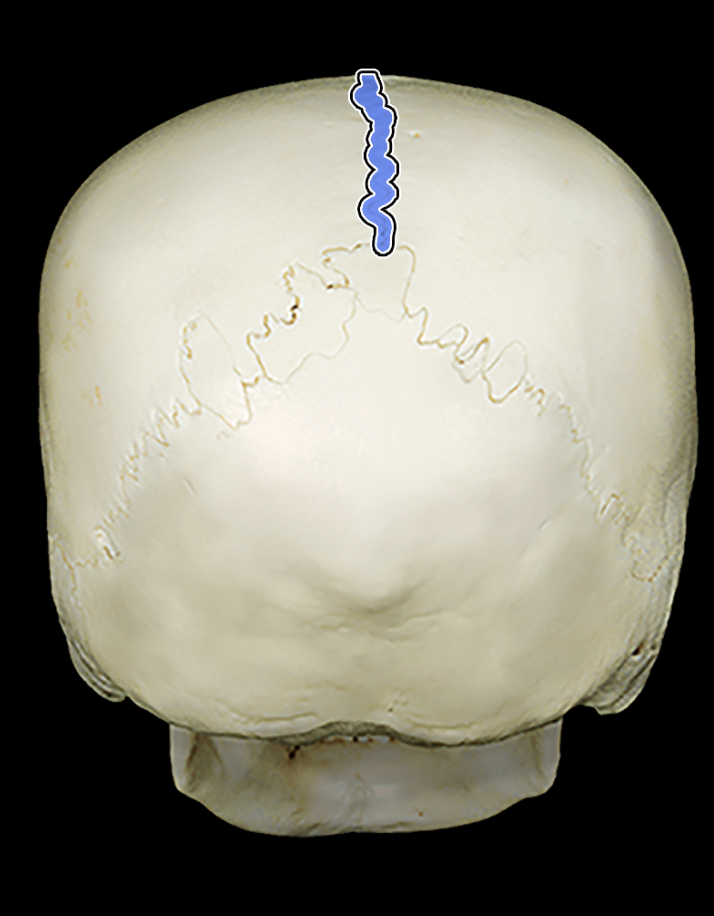
coronal suture
joint between frontal and parietal bones
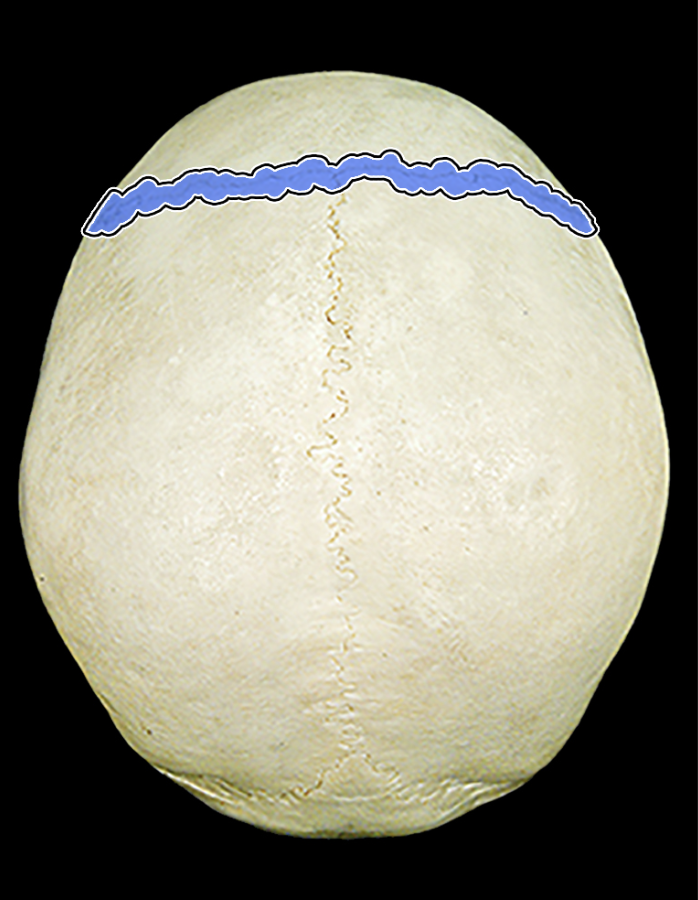
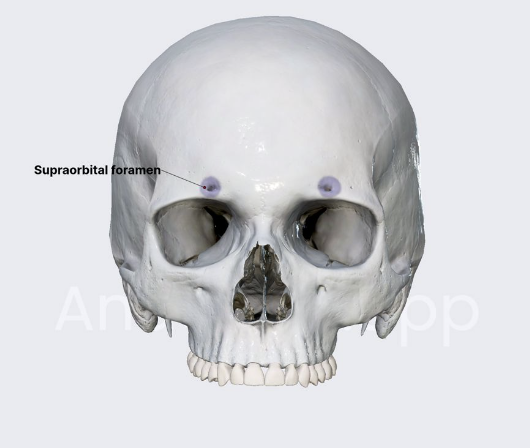
supraorbital foramen
a bony elongated opening located above the orbit (eye socket) and under the forehead on the frontal bone
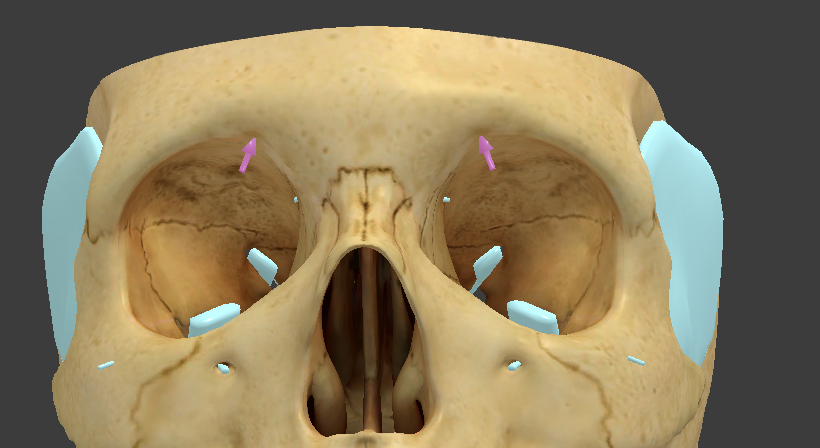
supraorbital notch
opening in frontal bone; incomplete supraorbital foramen, do same thing
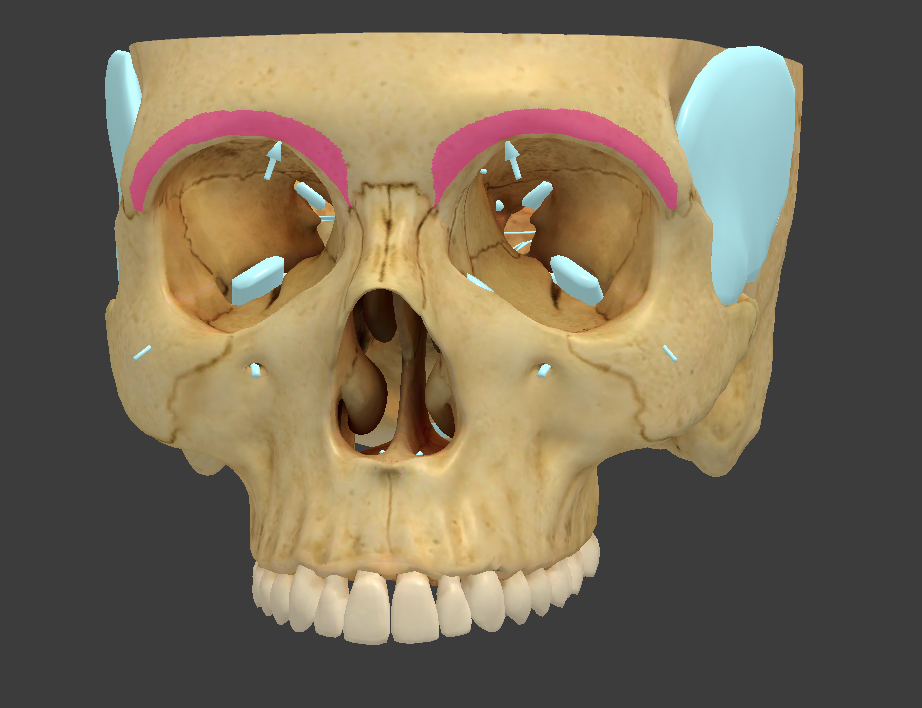
superciliary arch
part of frontal bone; make up brow ridges
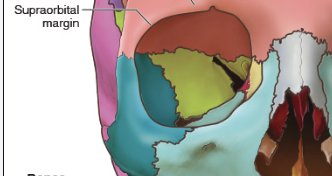
supraorbital margin
part of frontal bone; make up brow ridges
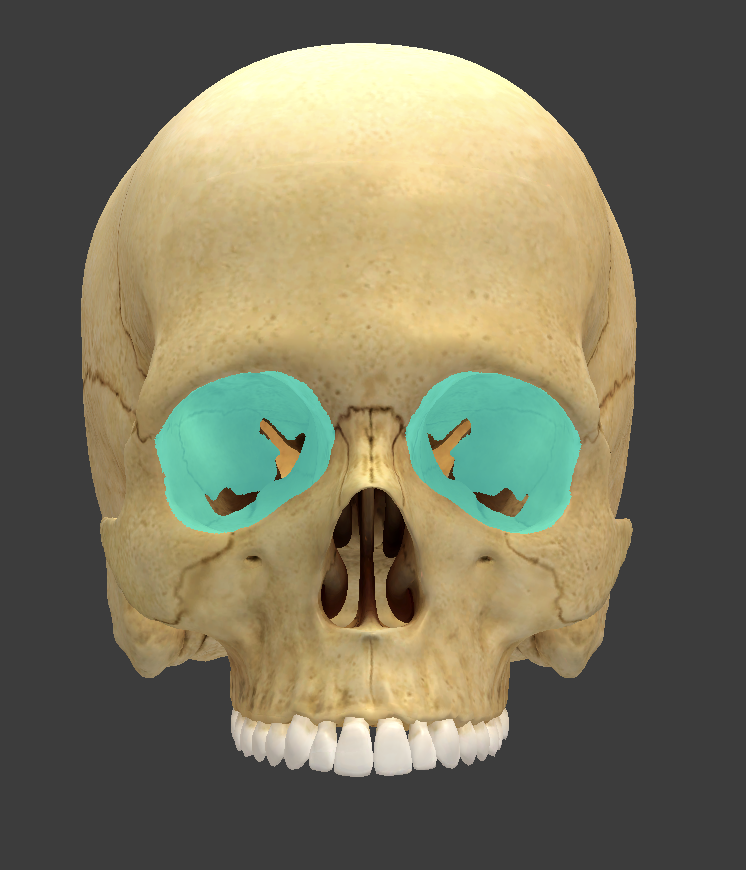
orbit
bony structures of the skull that house the globe, extraocular muscles, nerves, blood vessels, lacrimal apparatus, and adipose tissue
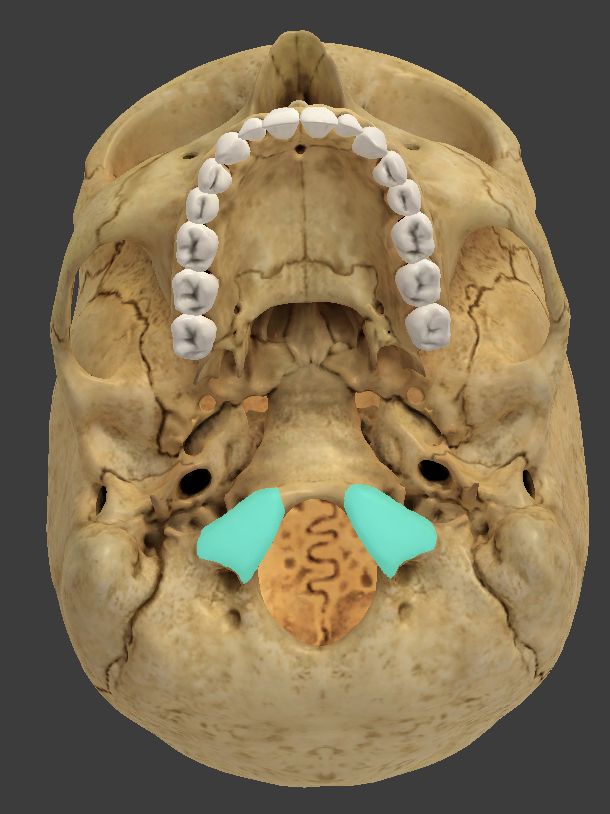
occipital condyles
articulate with 1st cervical vertebrae
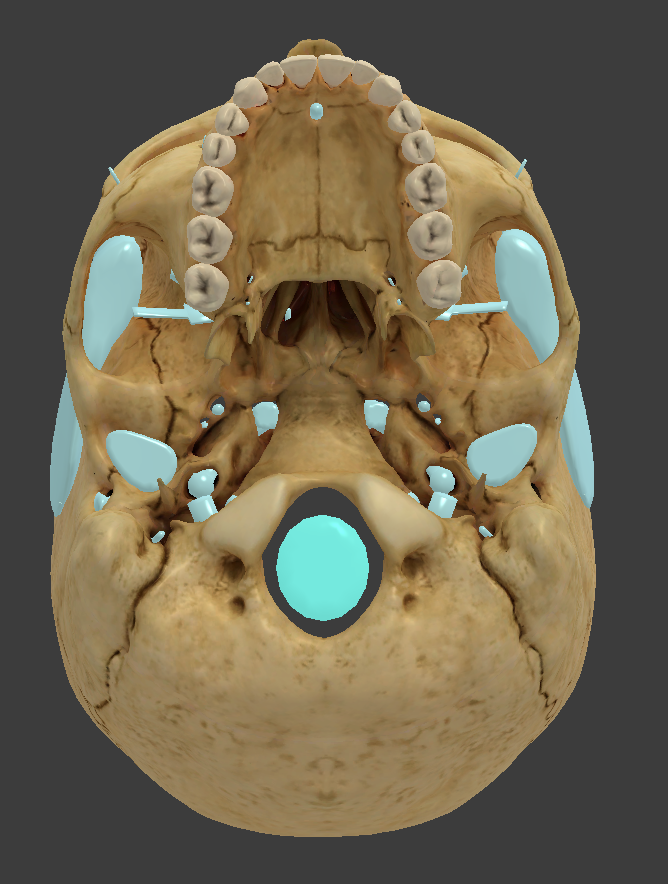
foramen magnum
large opening in base of occipital bone, allows spinal cord to exit
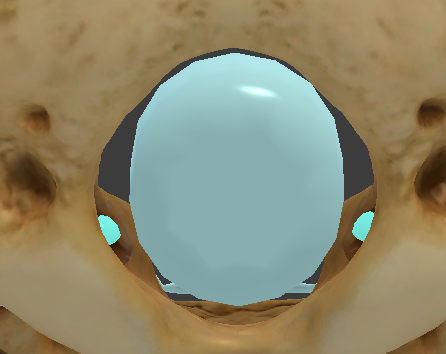
hypoglossal canal
lateral to foramen magnum; bone opening in occipital bone
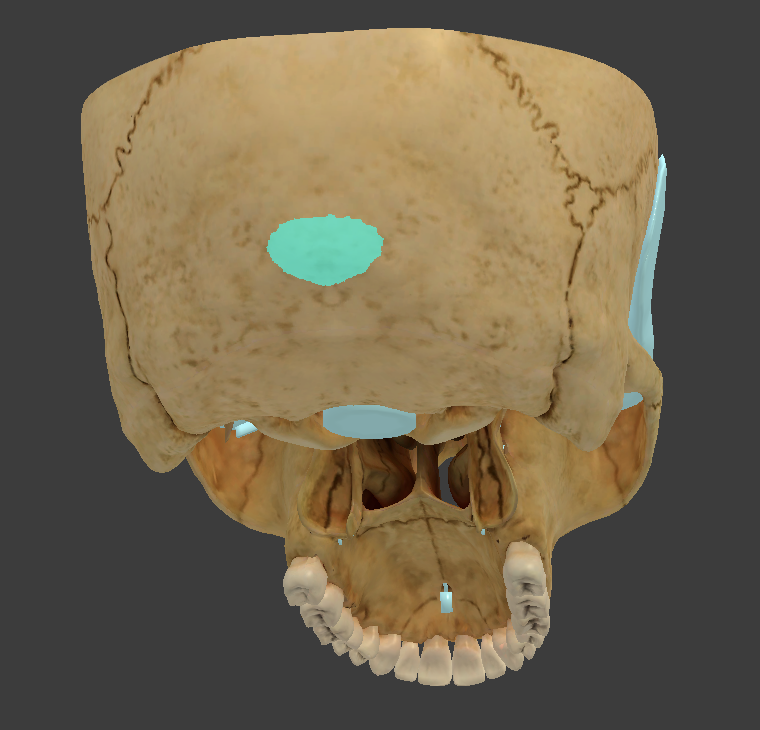
external occipital protuberance
knobline thing on occipital bone
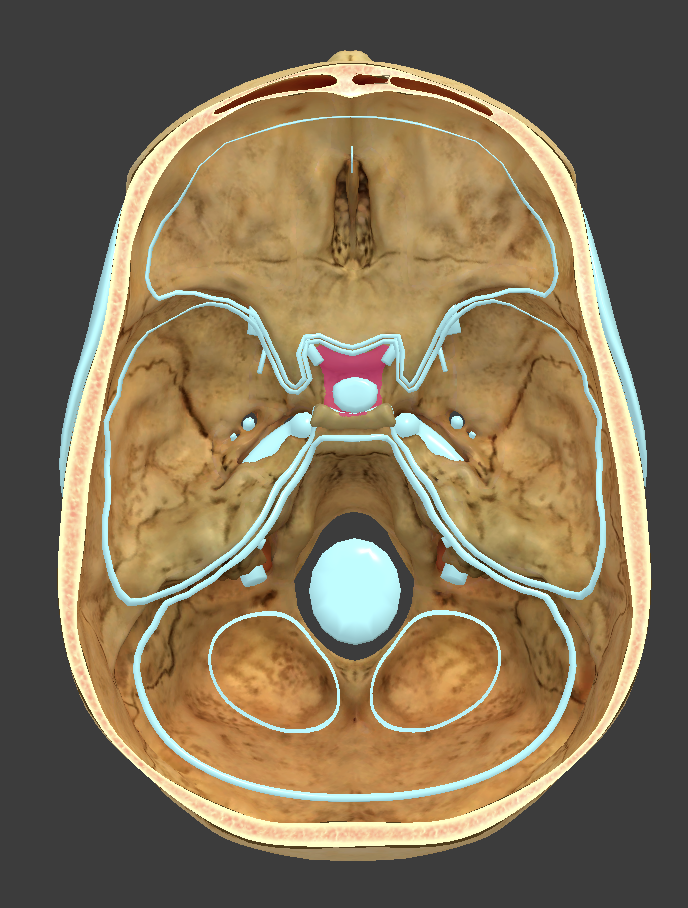
stella turcica / turkish saddle
on sphenoid bone
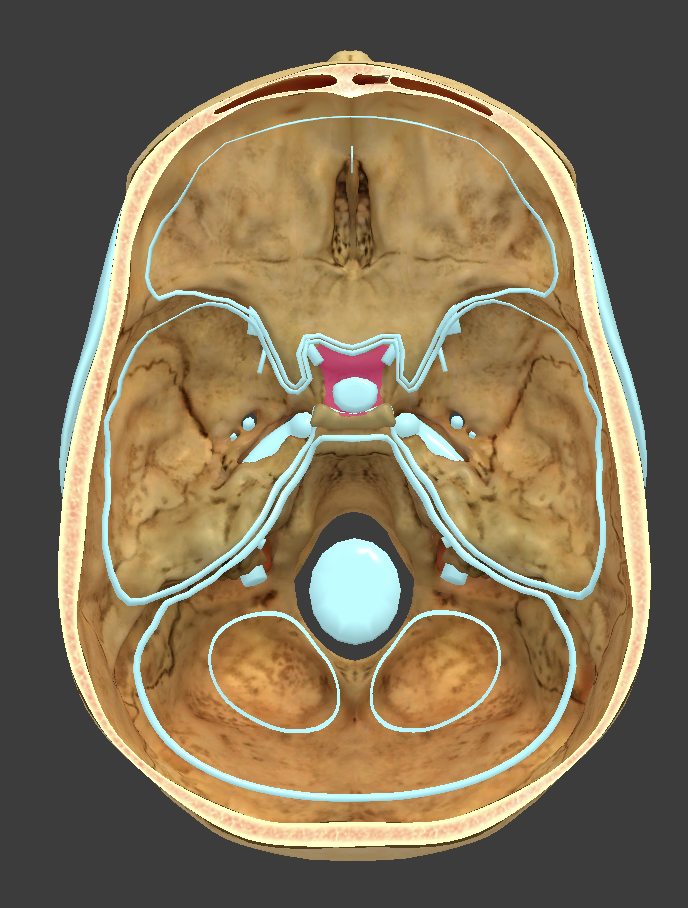
optic canal
sphenoid bone opening
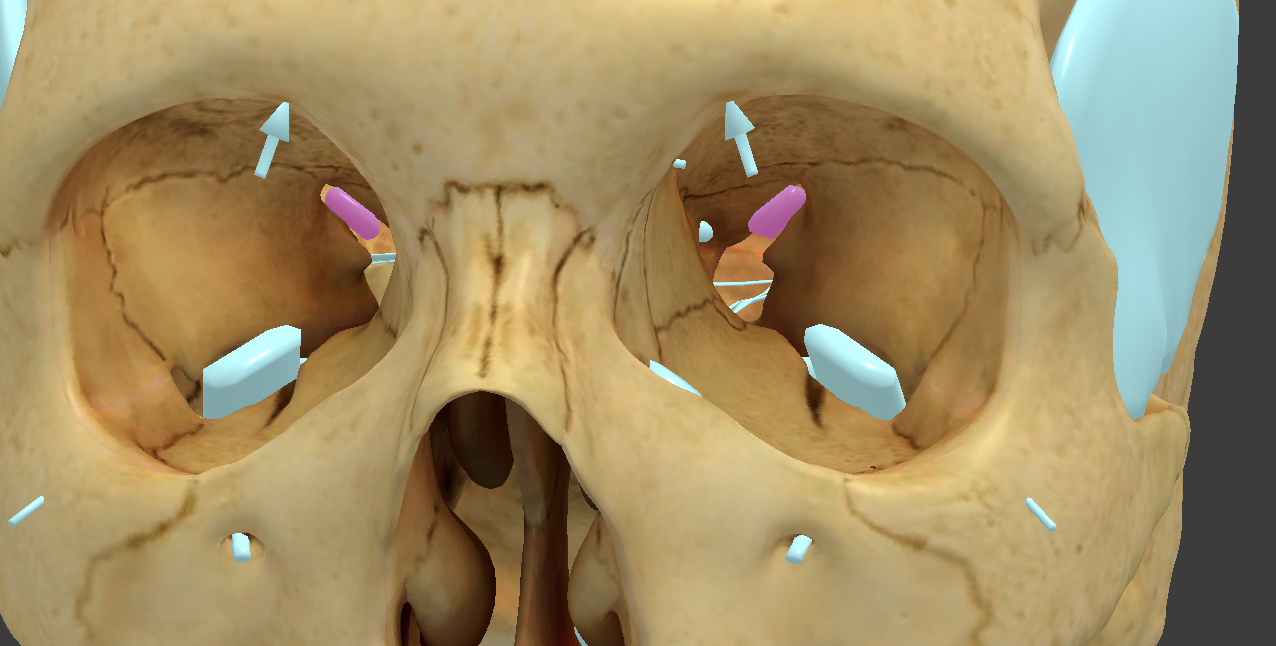
superior orbital fissure
sphenoid bone opening
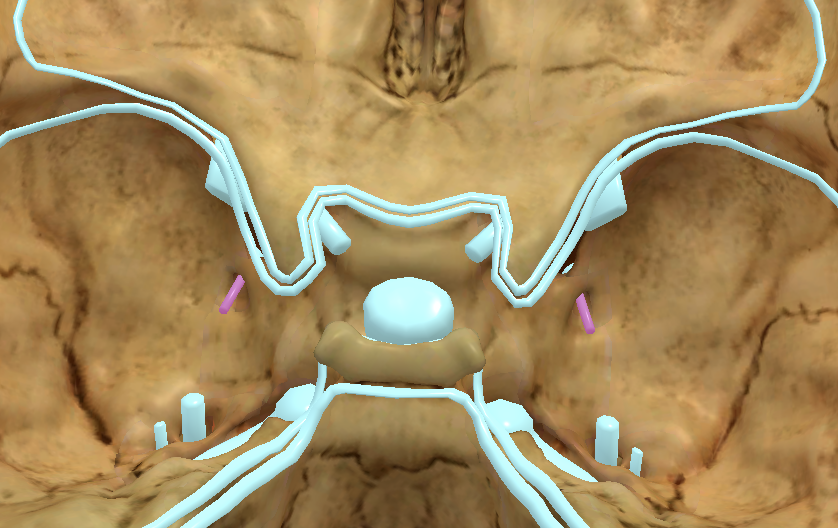
foramen rotundum
sphenoid bone opening
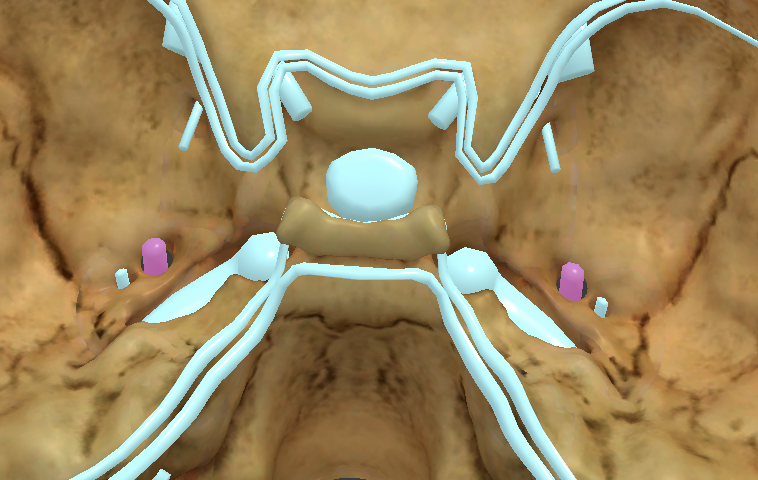
foramen ovale
sphenoid bone opening
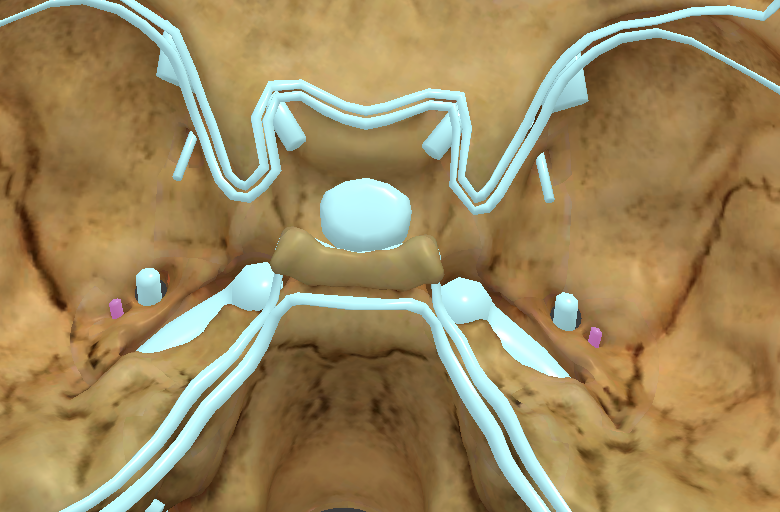
foramen spinosum
sphenoid bone opening
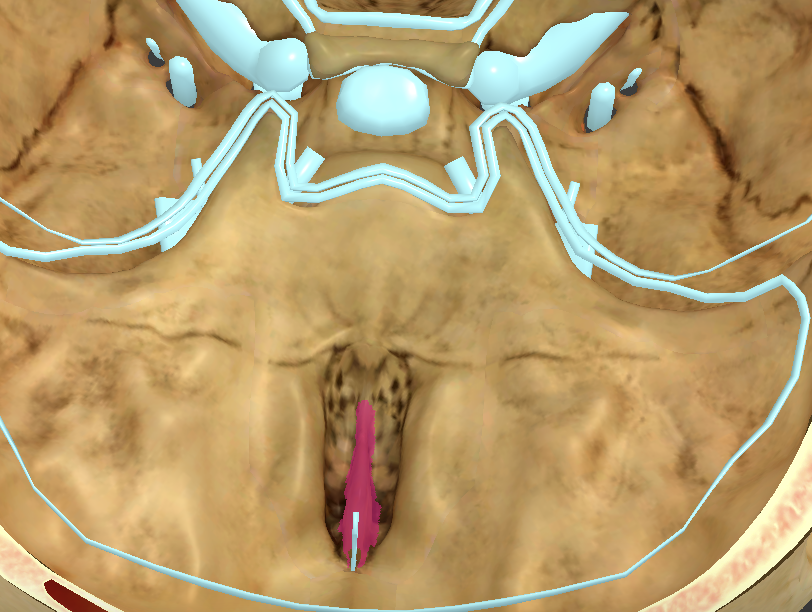
crista galli / cock’s comb
attachment site for dura mater on ethmoid bone
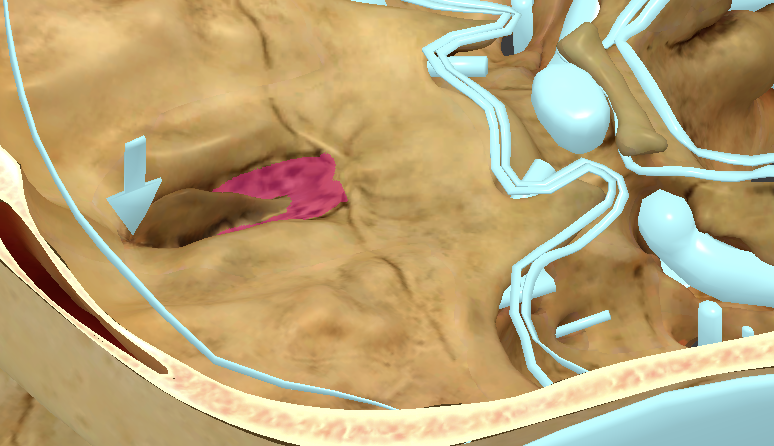
cribriform plate
forms the roof of the nasal cavity and separates the brain from the nasal cavity; part of ethmoid
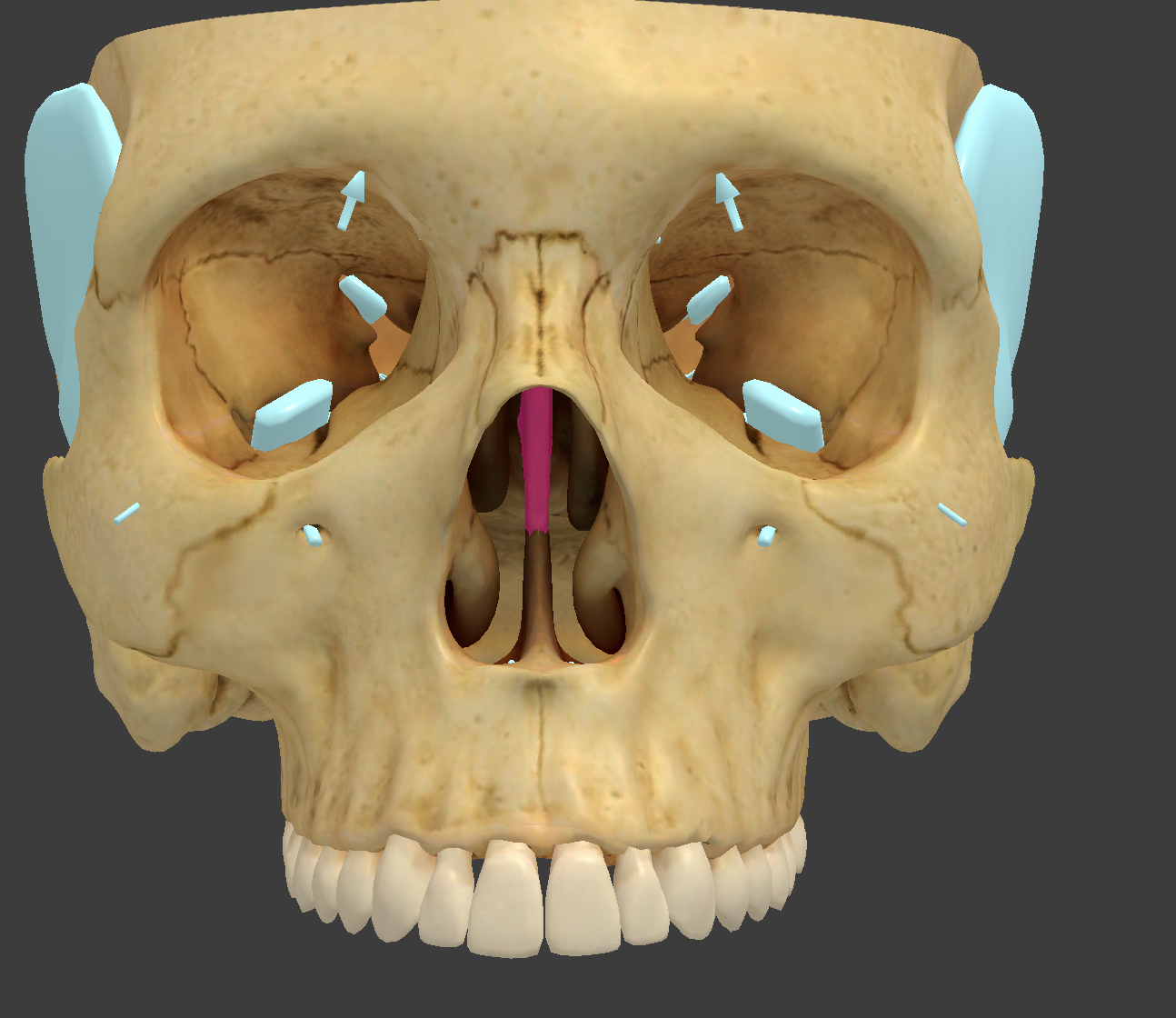
perpendicular plate
forms part of nasal septum on ethmoid
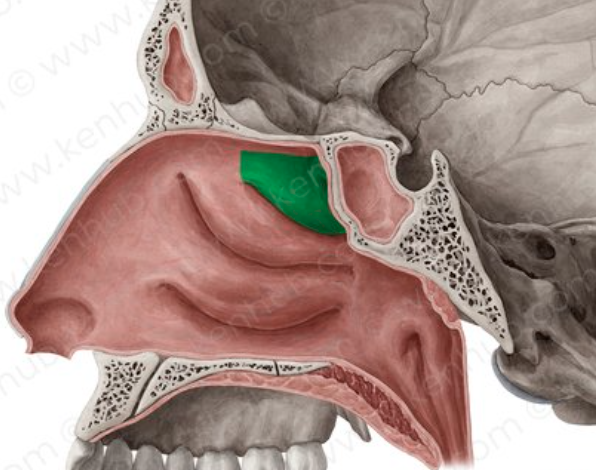
superior nasal conchae
increase airflow to nose on ethmoid bone
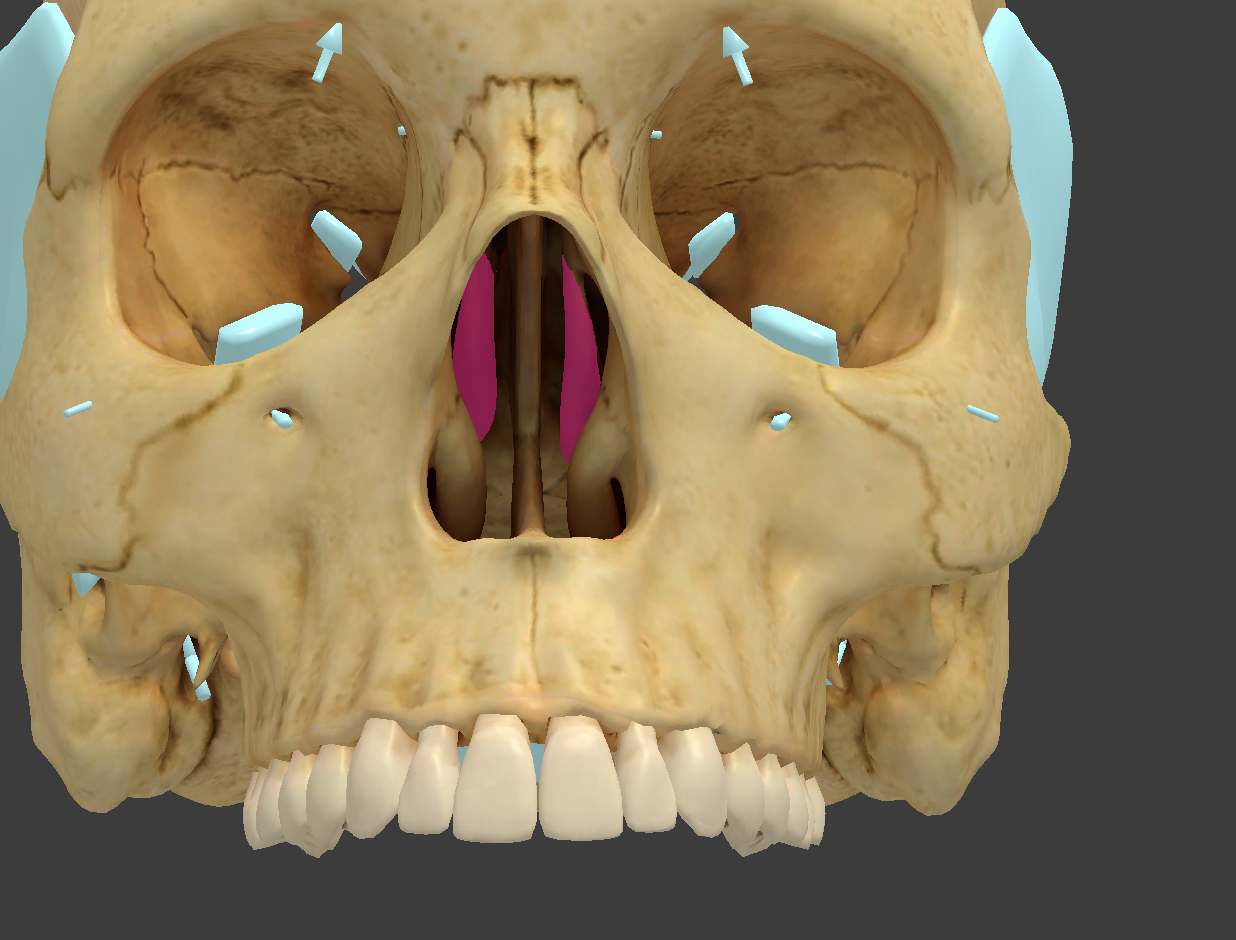
middle nasal conchae
increase airflow to nose on ethmoid bone
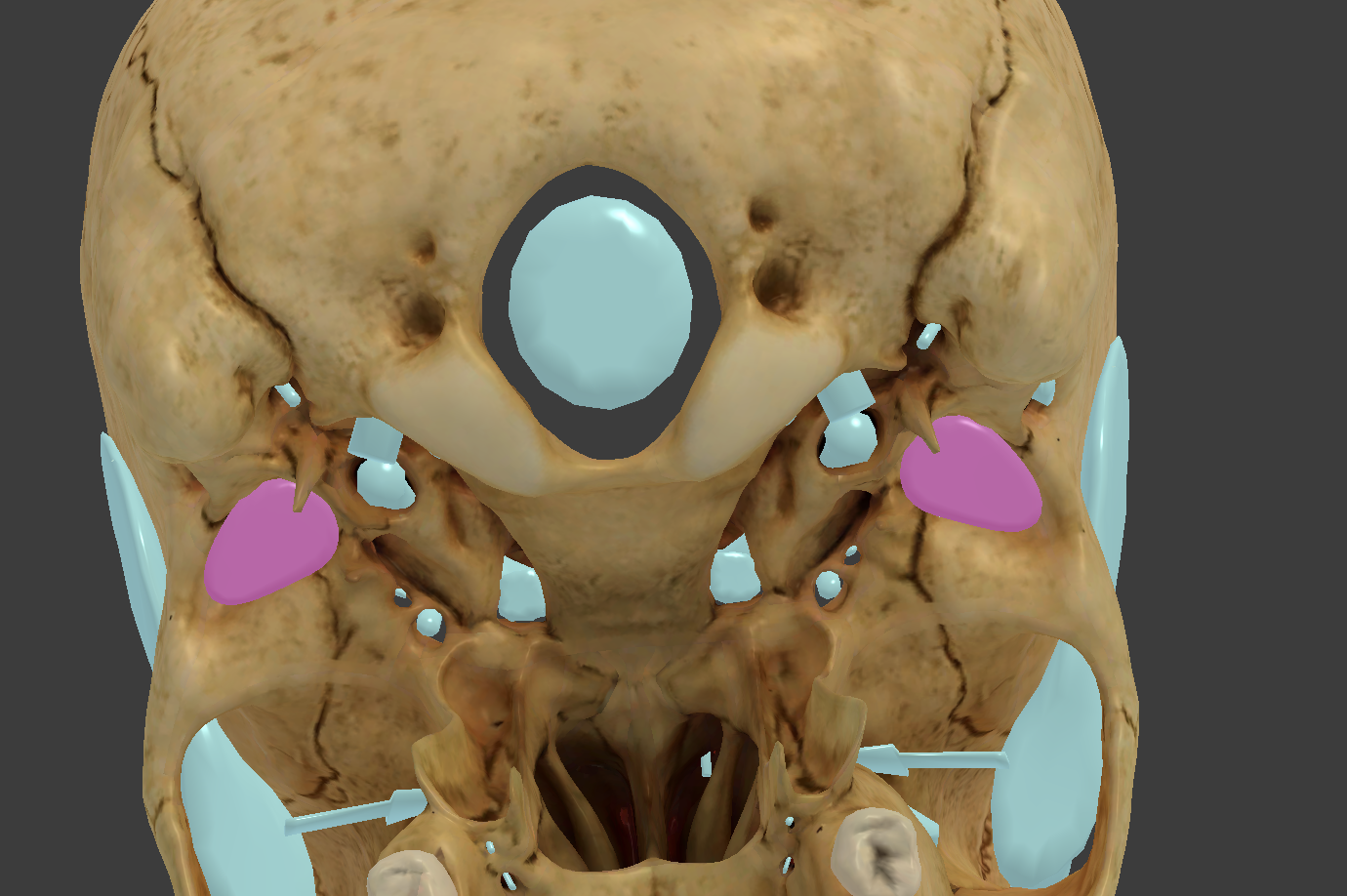
mandibular fossa
socket for mandible

mastoid processes
on temporal bone

zygomatic processes
on temporal bone
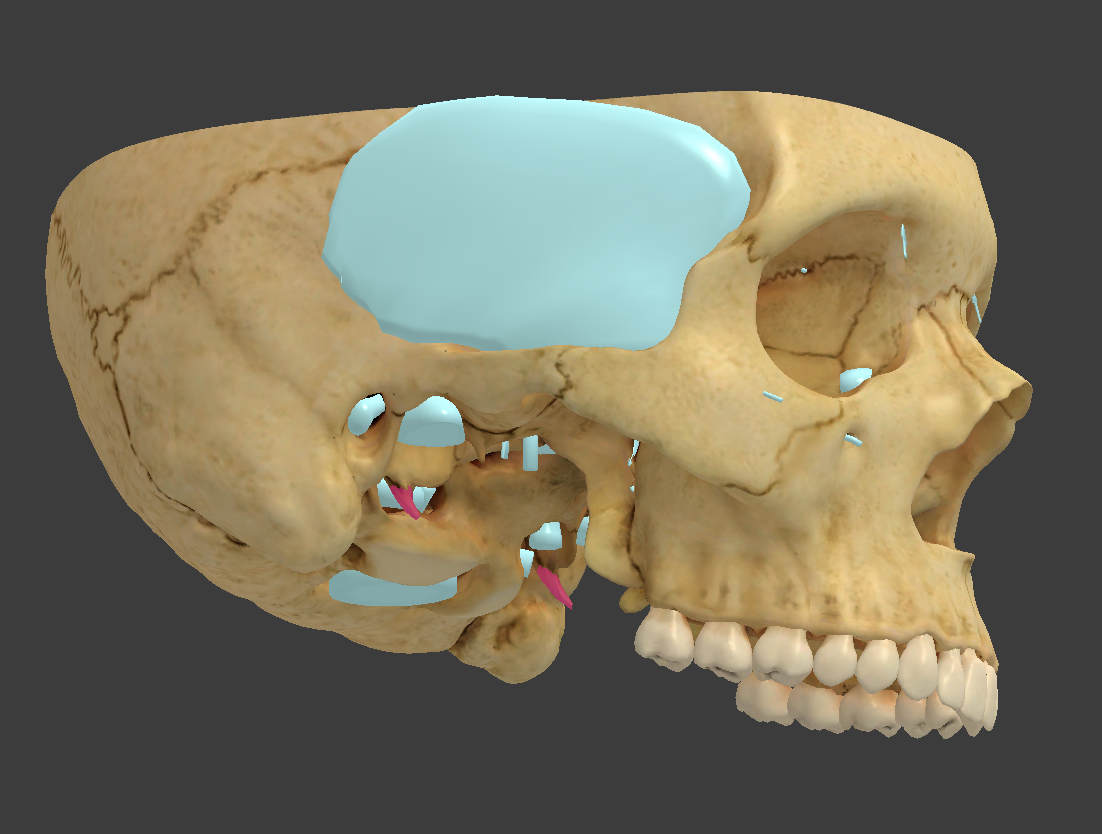
styloid processes
on temporal bone
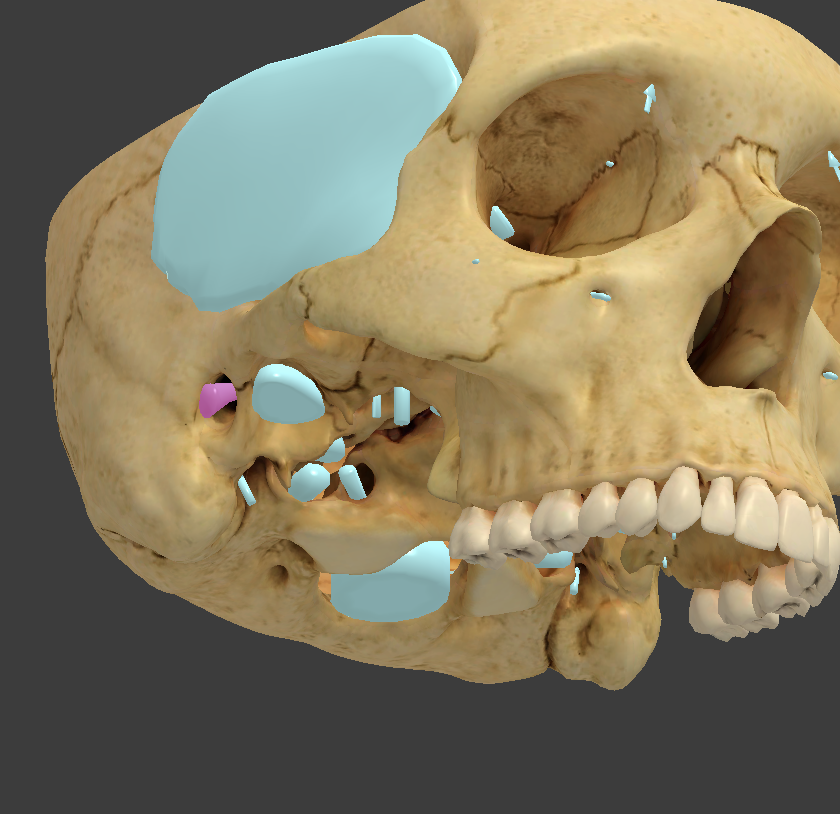
external acoustic meatus
found on external lateral surface of skull, where sound waves are conducted into ear; bone opening in temporal bone
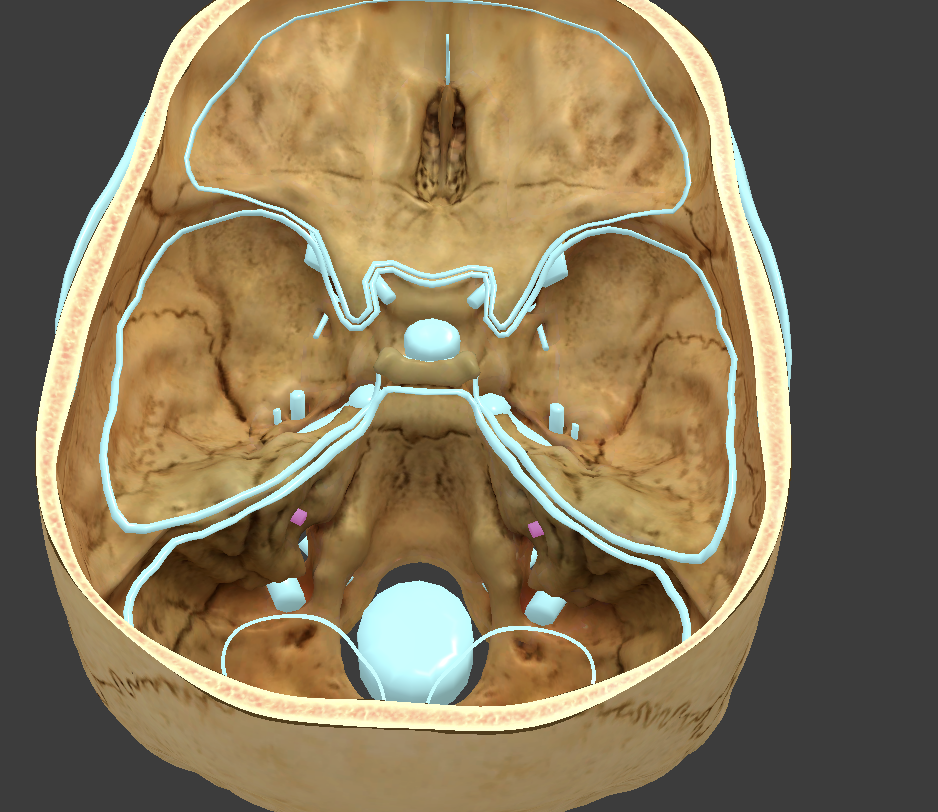
internal acoustic meatus
found on internal lateral surface of skull; nerves carrying info regarding sound and balance; bone opening in temporal bone
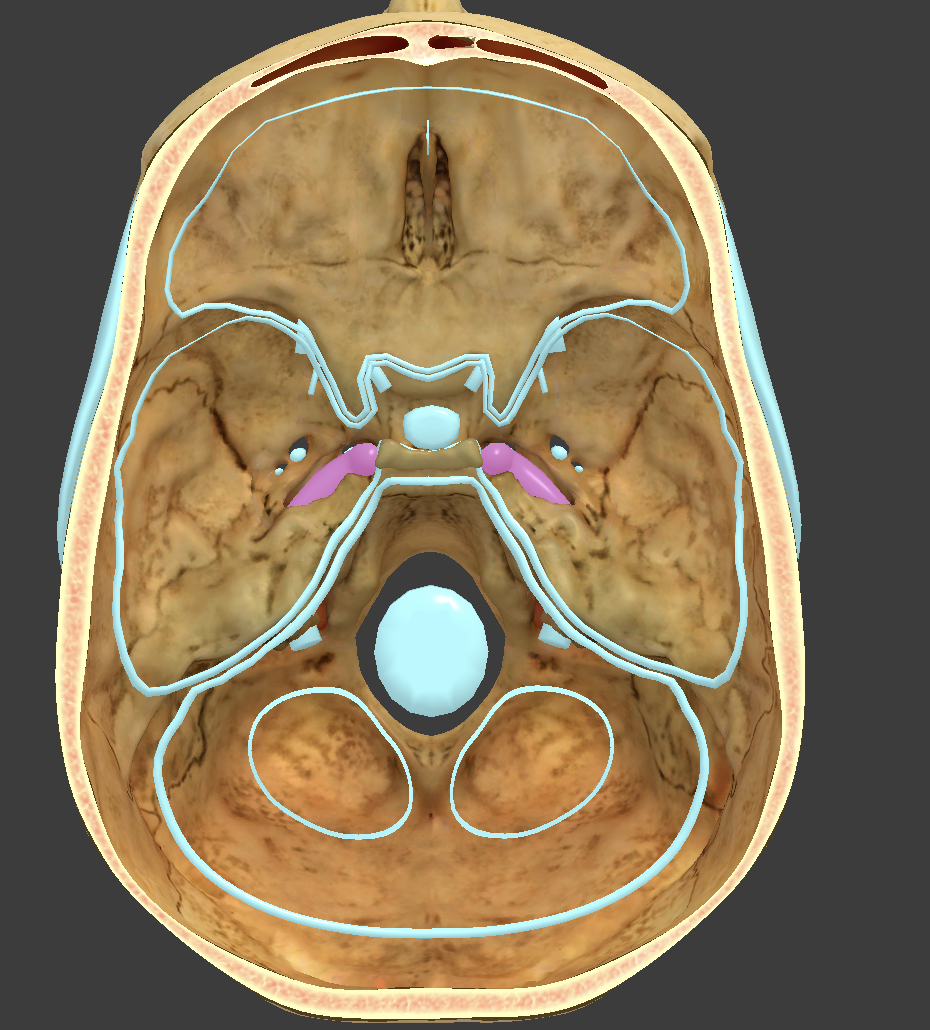
carotid canal
opening for internal carotid artery; bone opening in temporal bone
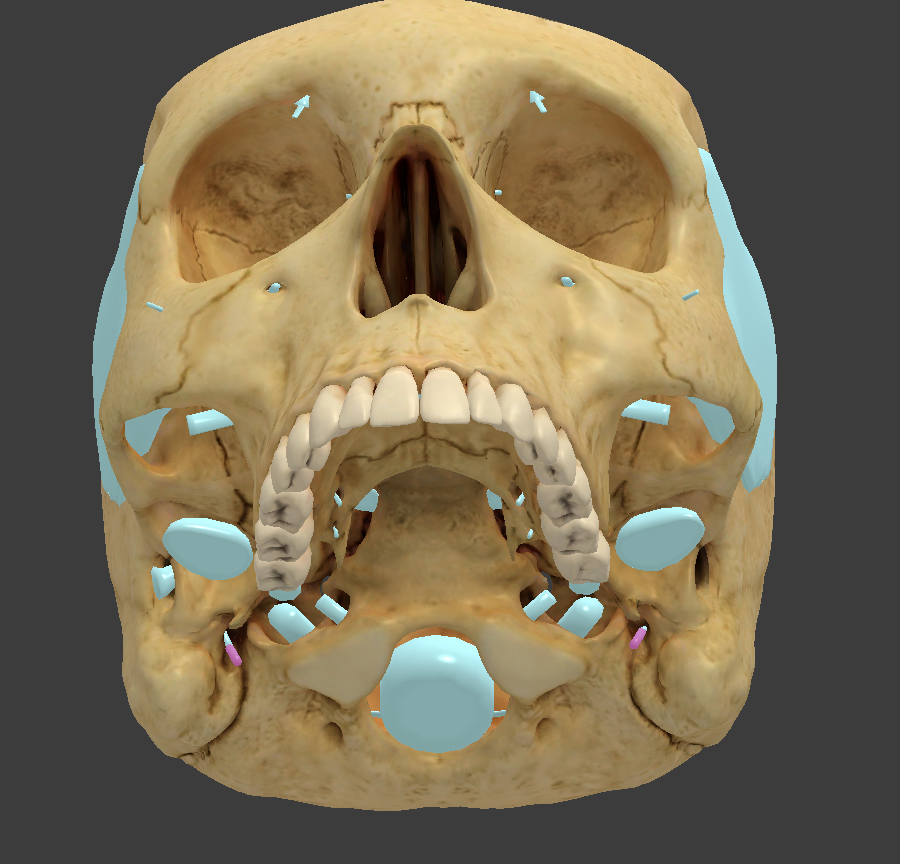
stylomastoid foramen
opening found between the styloid process and the mastoid process; bone opening in temporal bone
mastoiditis
inflammation of the air cells of the mastoid process

apex of nasal bone
tip of nasal bone
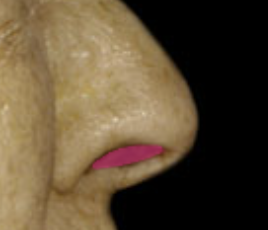
nostrils / external nares
part of nasal bone
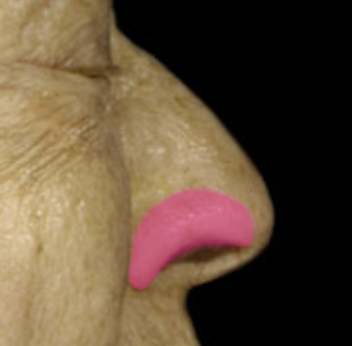
ala of nose
crescent-shaped, expanded outer wall of cartilage on each side of the nose that forms the lateral part of the nasal vestibule; part of nasal bone
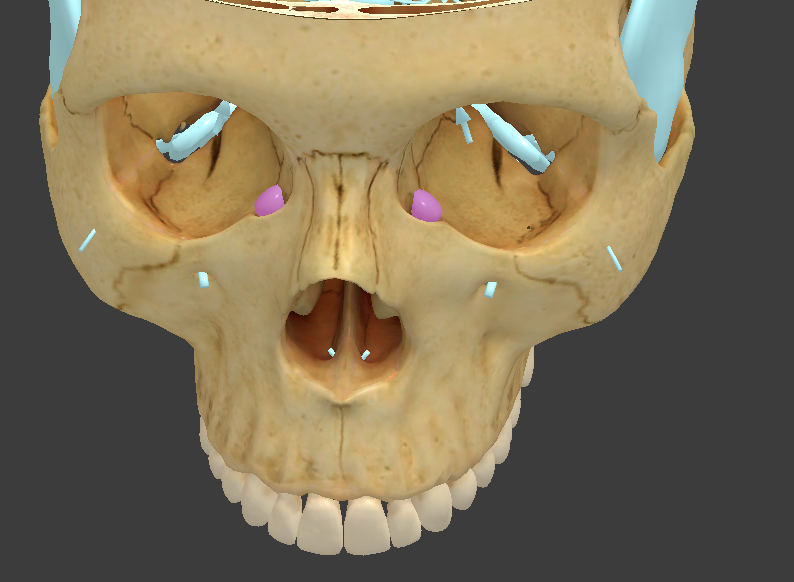
lacrimal fossa
contain lacrimal sac; part of lacrimal bones
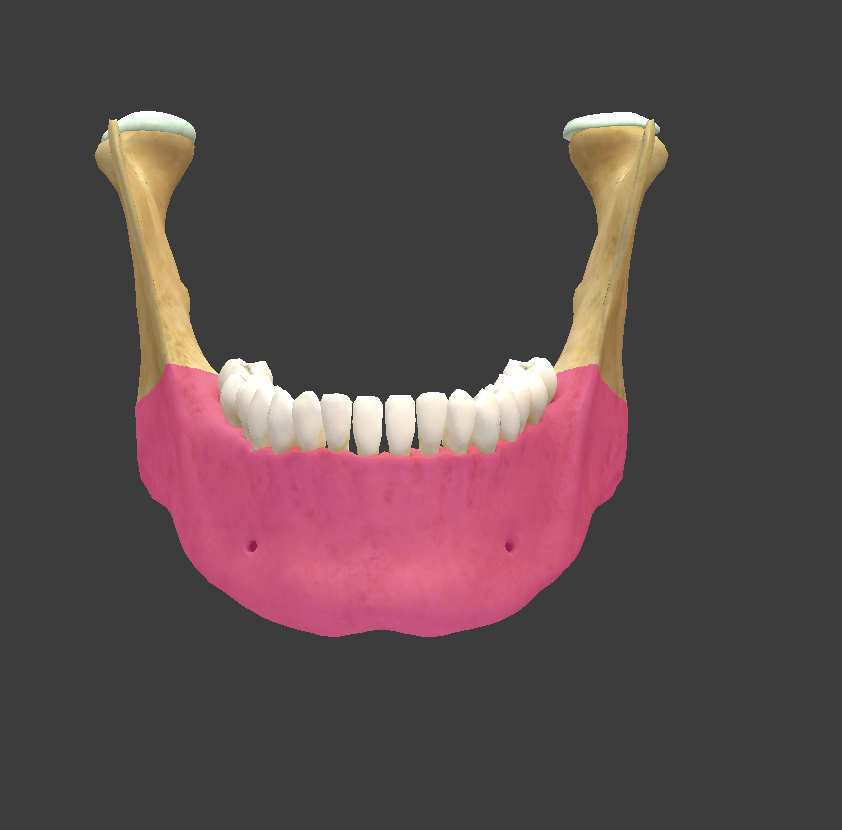
body of mandible
part of mandible

mandibular angle
part of mandible
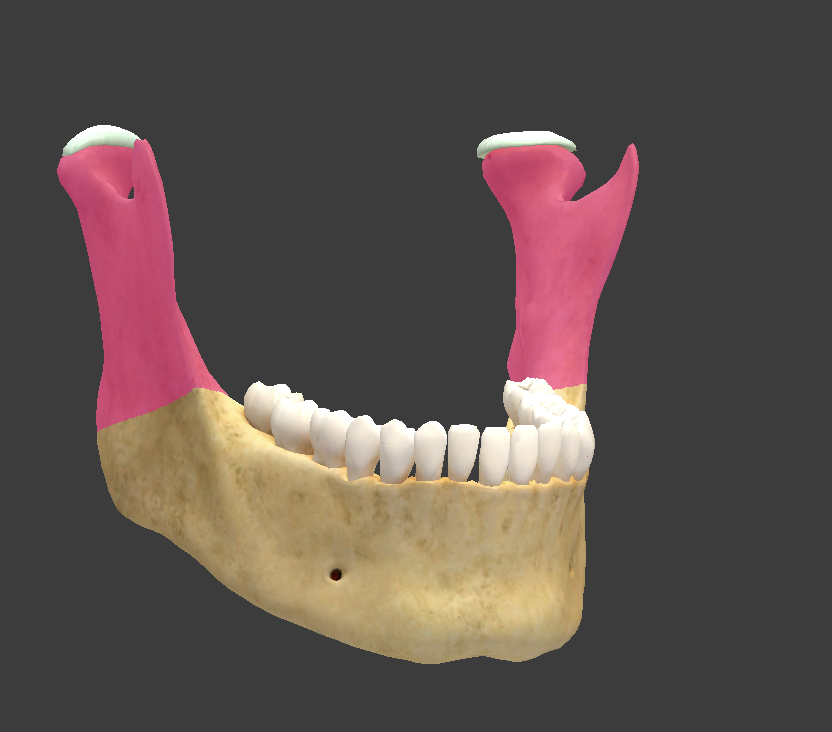
ramus
part of mandible
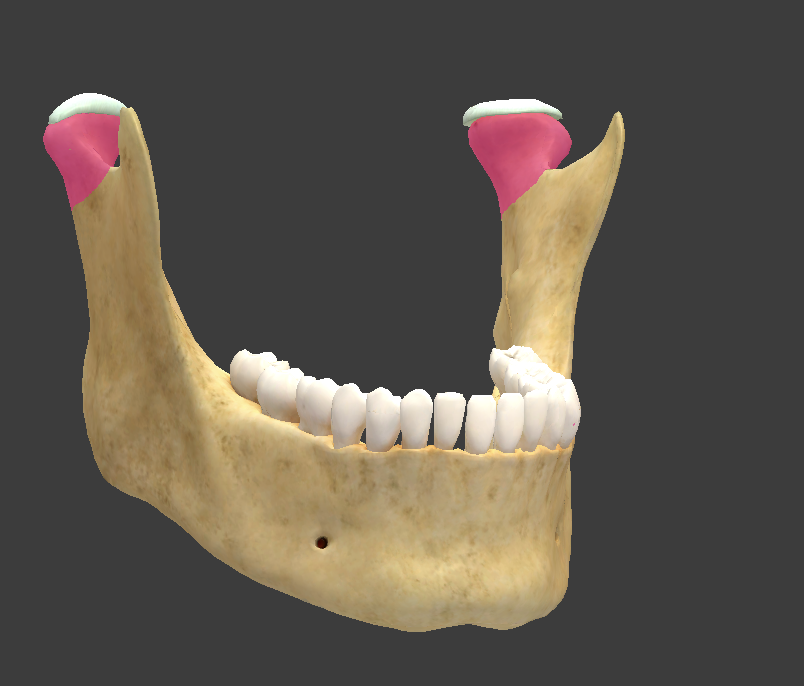
mandibular condyles / condylar processes of mandible
part of mandible
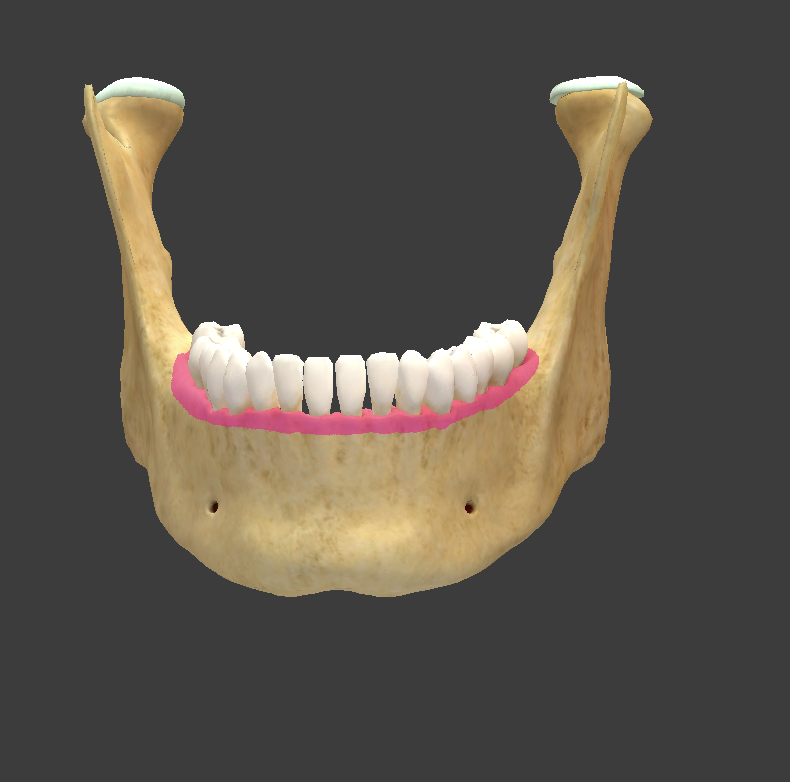
alveolar processes of mandible
surround and support lower teeth; part of mandible
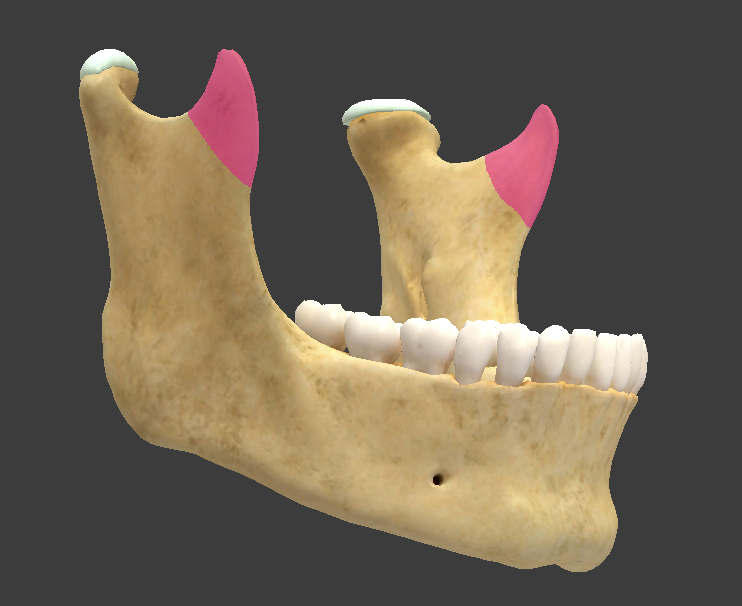
coronoid process
part of mandible; serves as insertion point for temporalis muscle
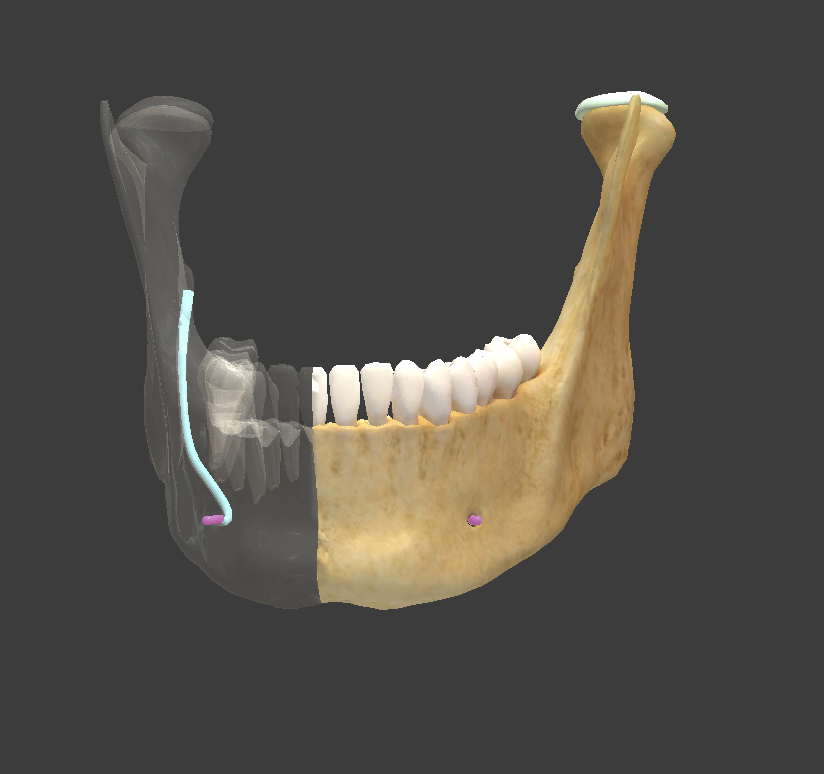
mental foramen
bone opening of mandible

mental protuberace
anterior tip of mandible
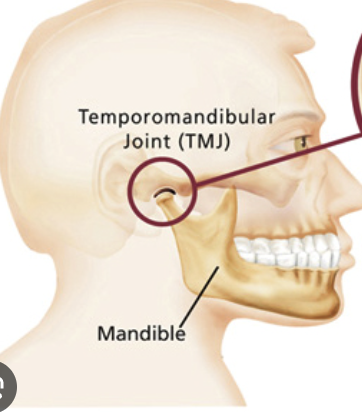
temporomandibular joint (TMJ)
joint that connects your lower jaw to your skull, just in front of your ears
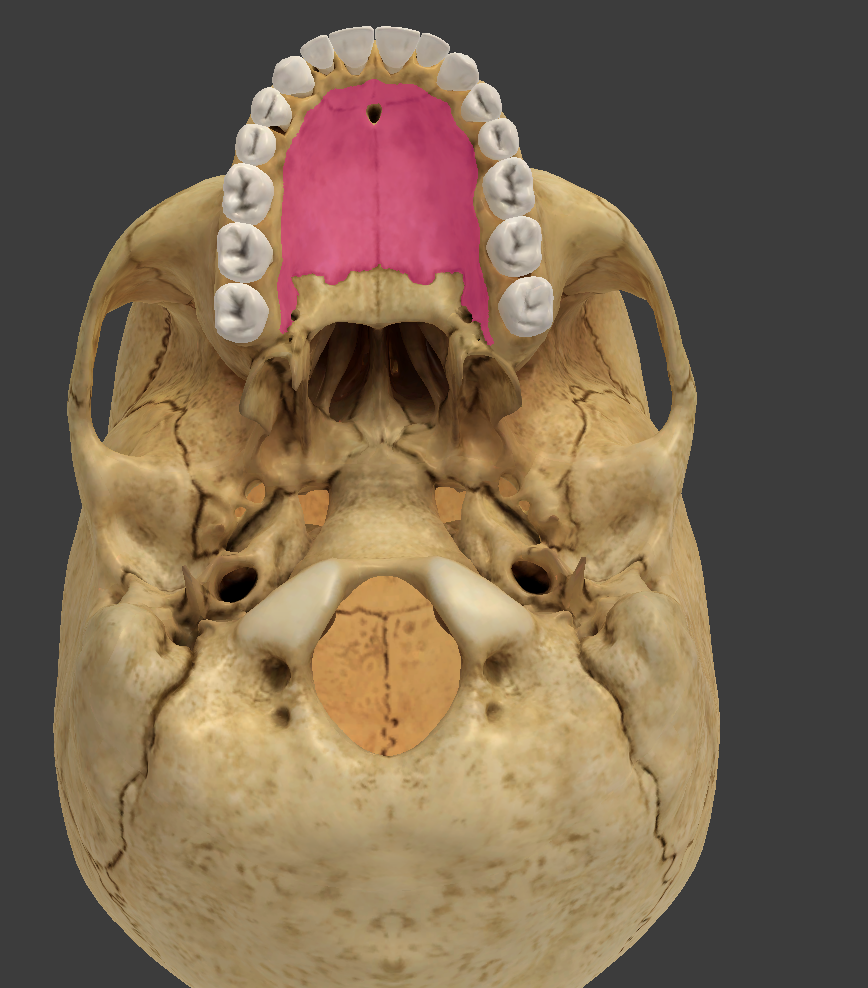
palatine process
forms anterior of hard palate; part of maxillae
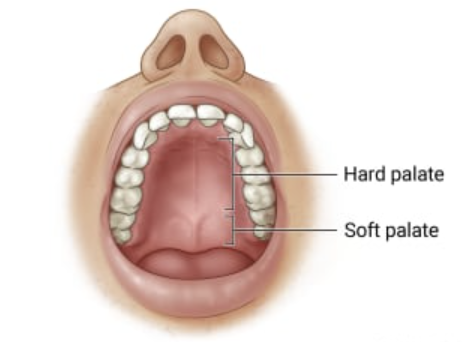
hard palate
roof of mouth; part of maxillae
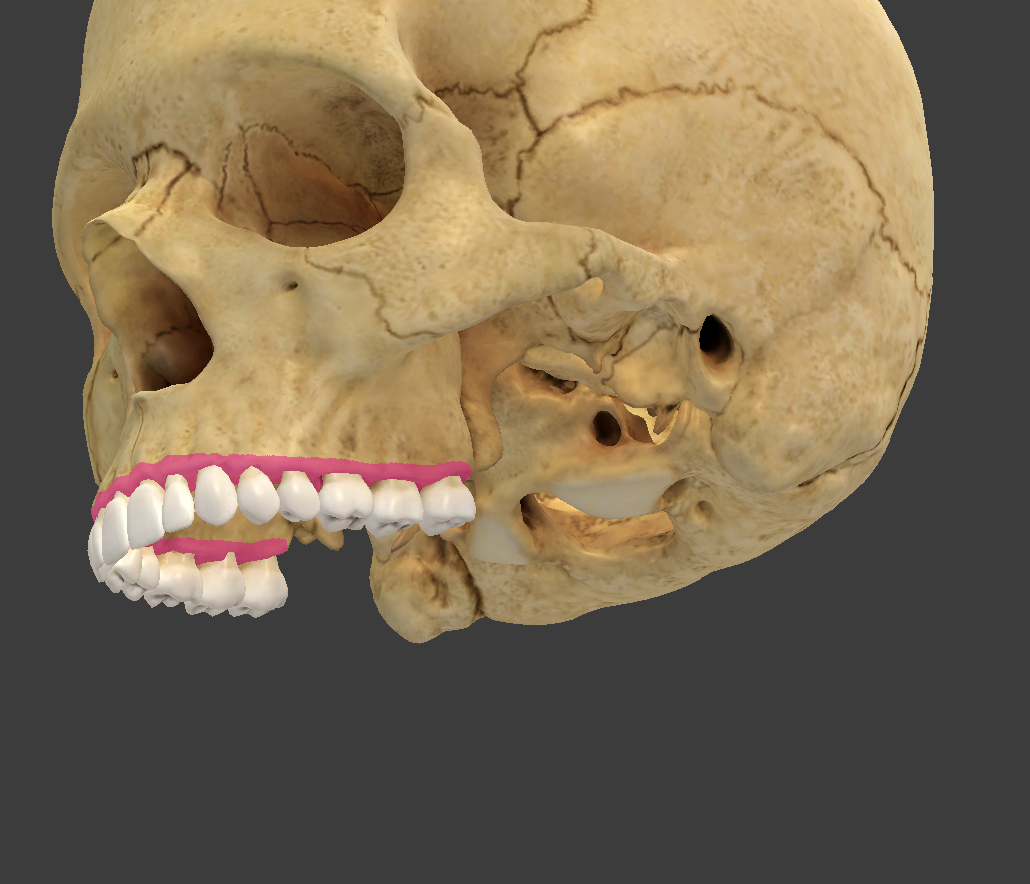
alveolar processes of maxilla
part of maxilla that supports upper teeth
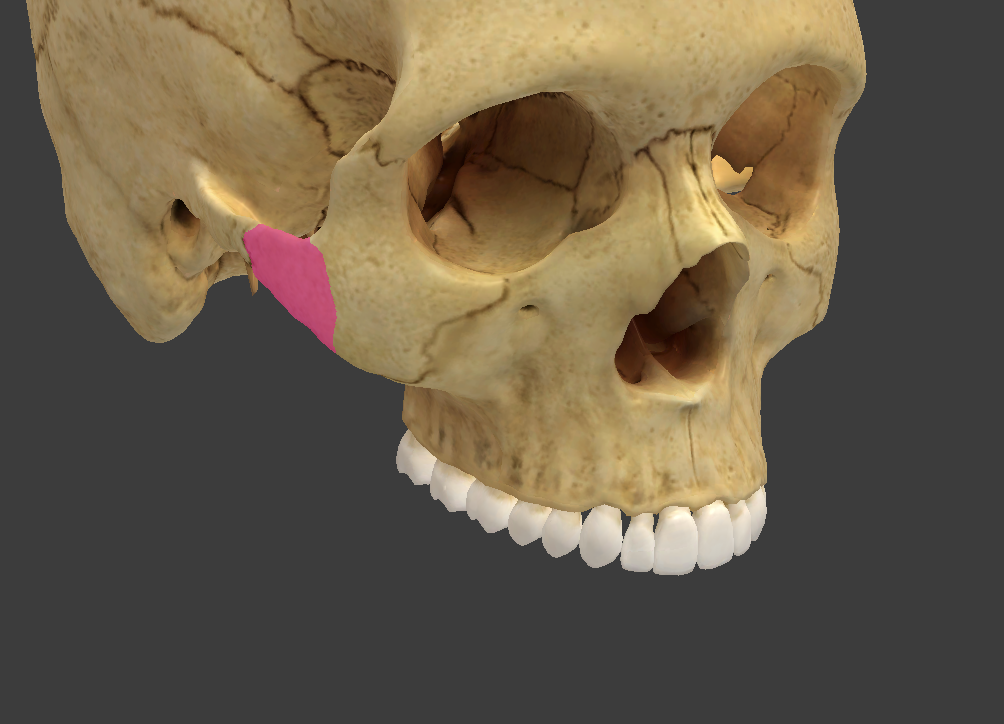
temporal processes of zygomatic bone
process that articulates with the zygomatic processes of temporal bone; part of zygomatic bones
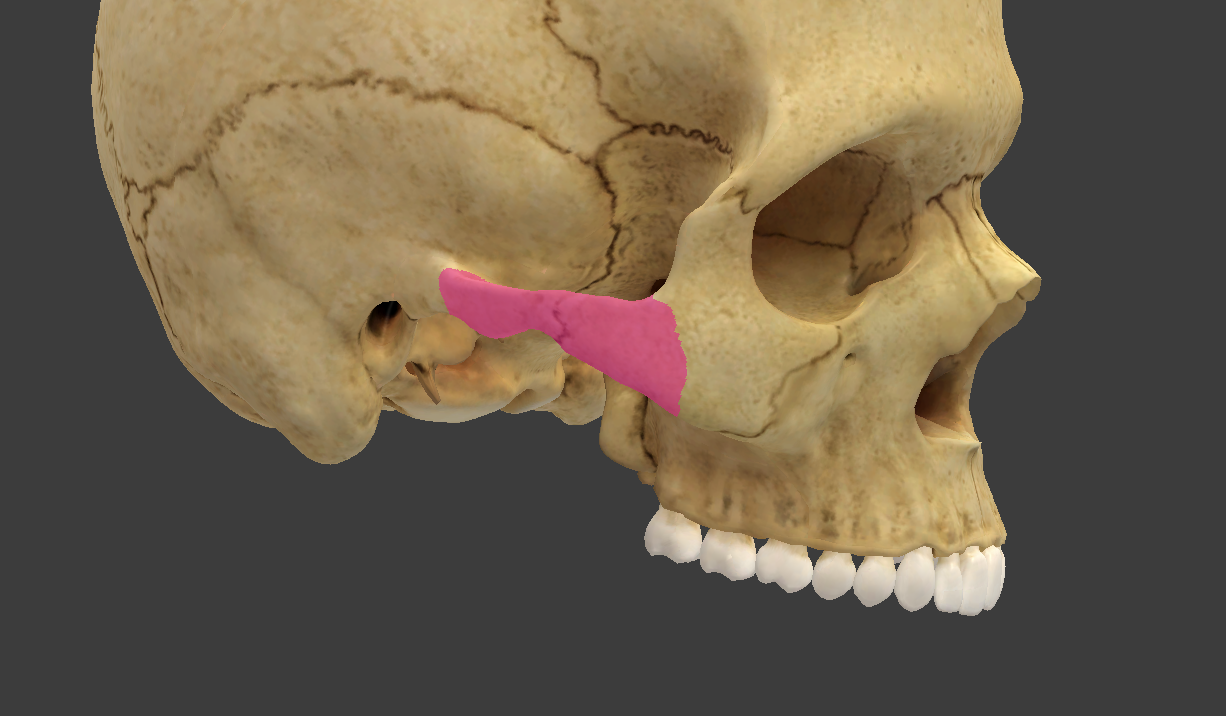
zygomatic arch
part of zygomatic bones
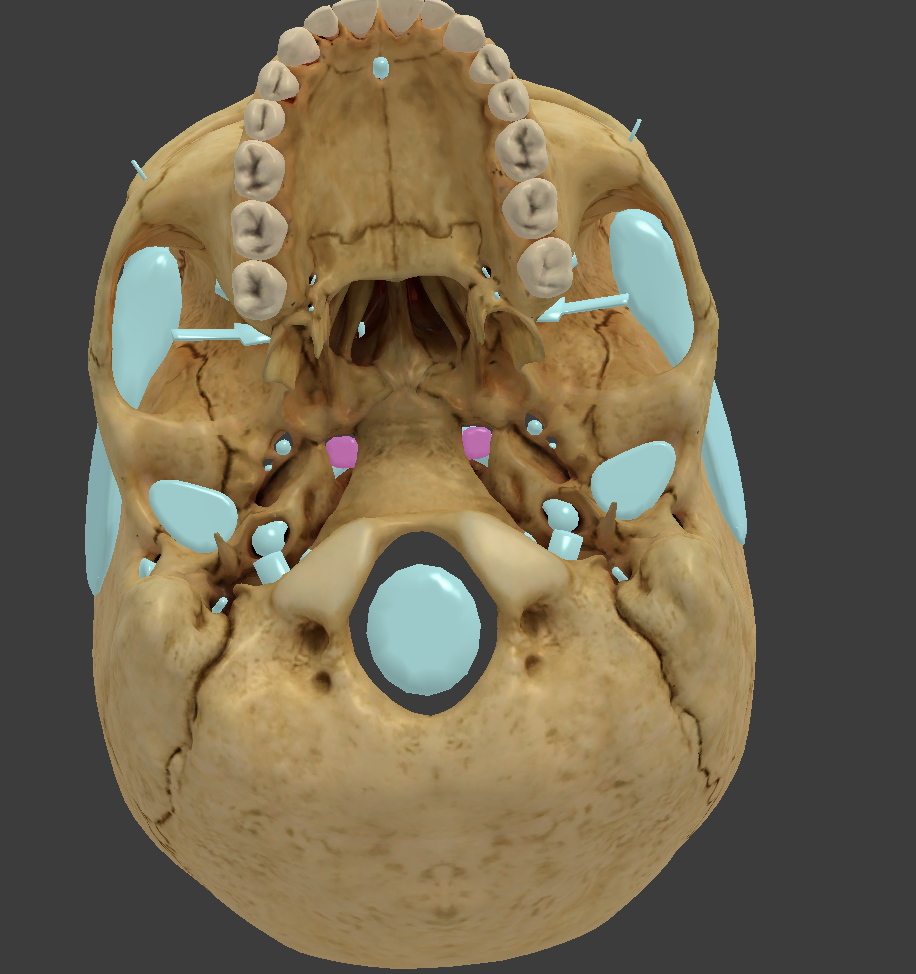
foramen lacerum
found between temporal and sphenoid bones near the stella turcica; between skull bones
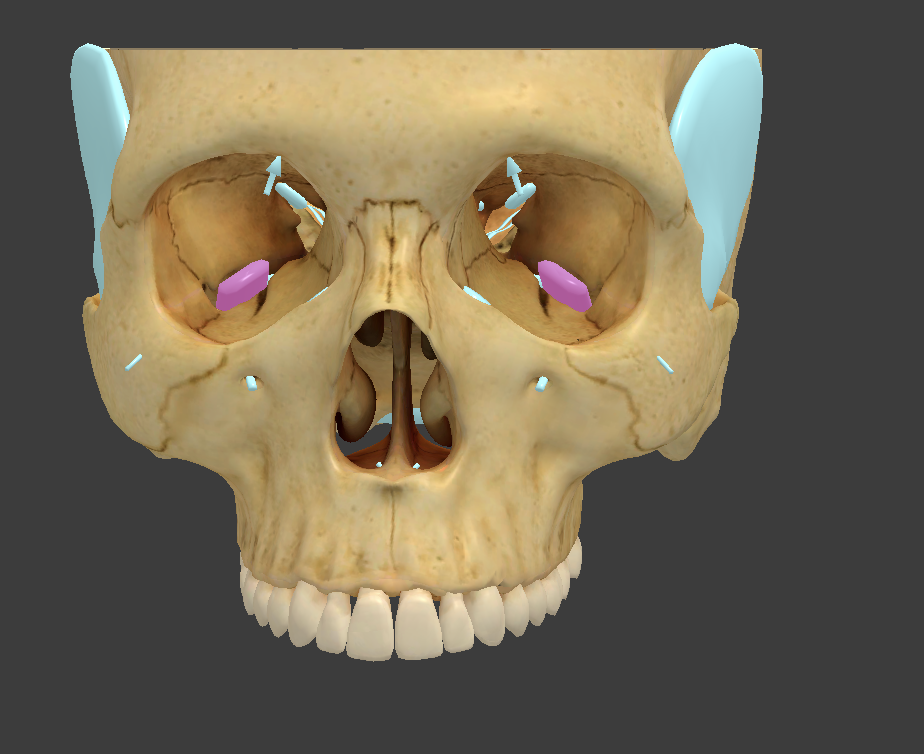
inferior orbital fissure
found between sphenoid and maxilla bones, slit-like opening in the inferior surface of the orbit; between skull bones
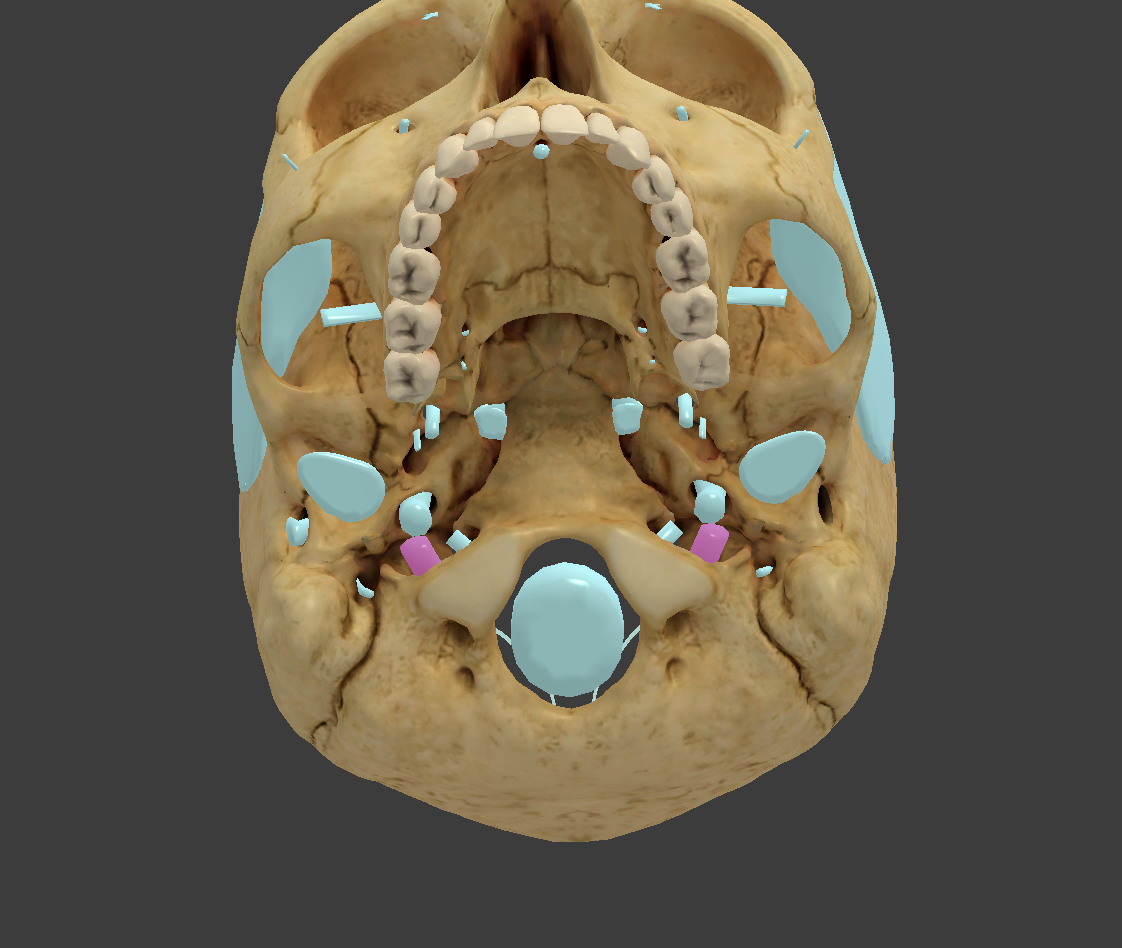
jugular foramen
large opening between the temporal and occipital bones; between skull bones
what bones make up orbits
parts of ethmoid, frontal, lacrimal, maxillae, palatine, sphenoid, and zygomatic
what bones make up nasal cavity
parts of frontal, sphenoid, ethmoid, maxillae, lacrimal, inferior nasal concha, and nasal bones
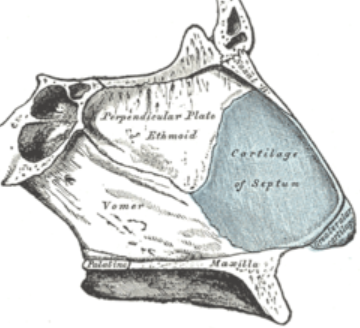
septum
divides nasal cavity into left and right parts; bone posteriorly and cartilage anteriorly
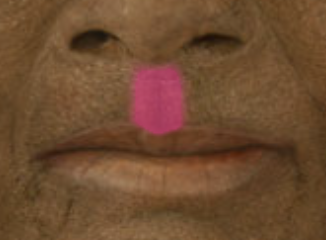
philtrum
shallow vertical groove on upper lip; surface anatomy only
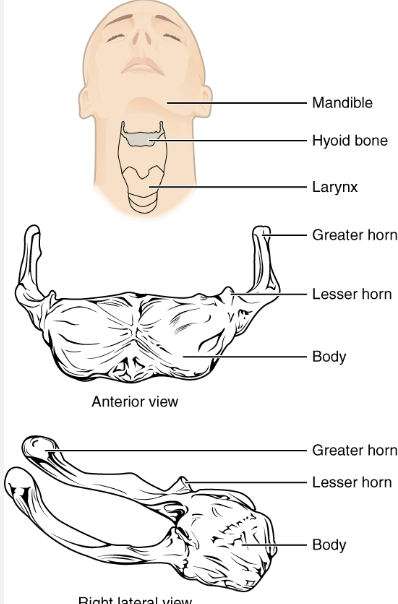
hyoid bone
u-shaped bone that can move from side to side; does not articulate with any other bone
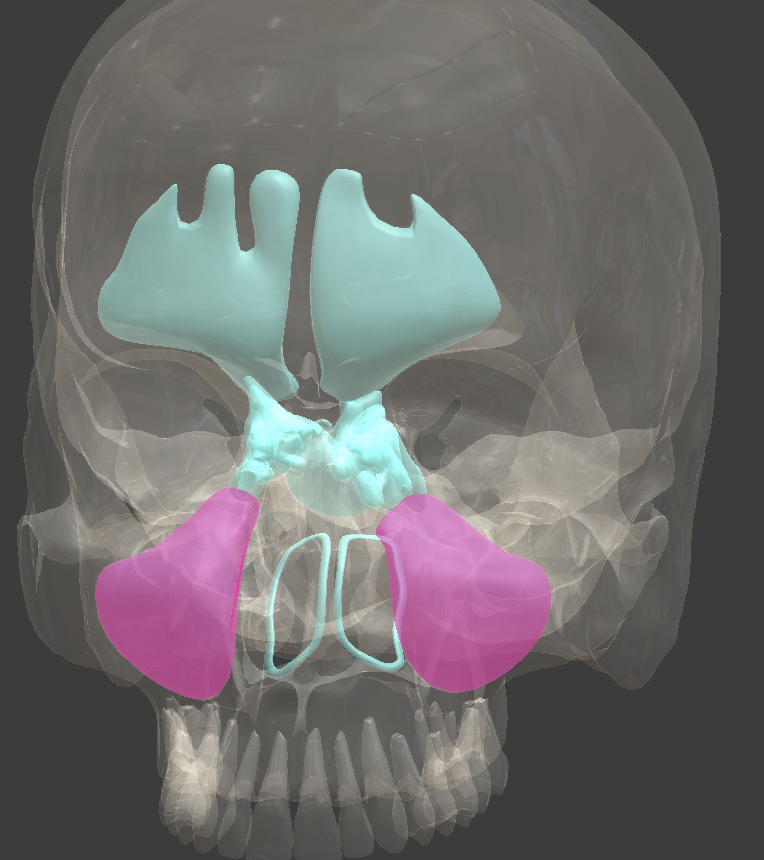
maxillae paranasal sinus
mucous lined, air filled cavity in maxillae bone
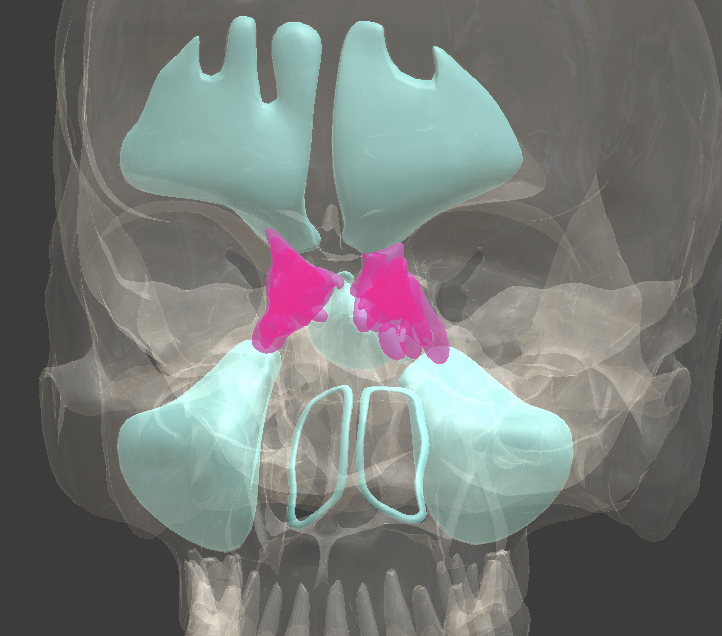
ethmoid paranasal sinus (ethmoid cells)
mucous lined, air filled cavity in the ethmoid bone
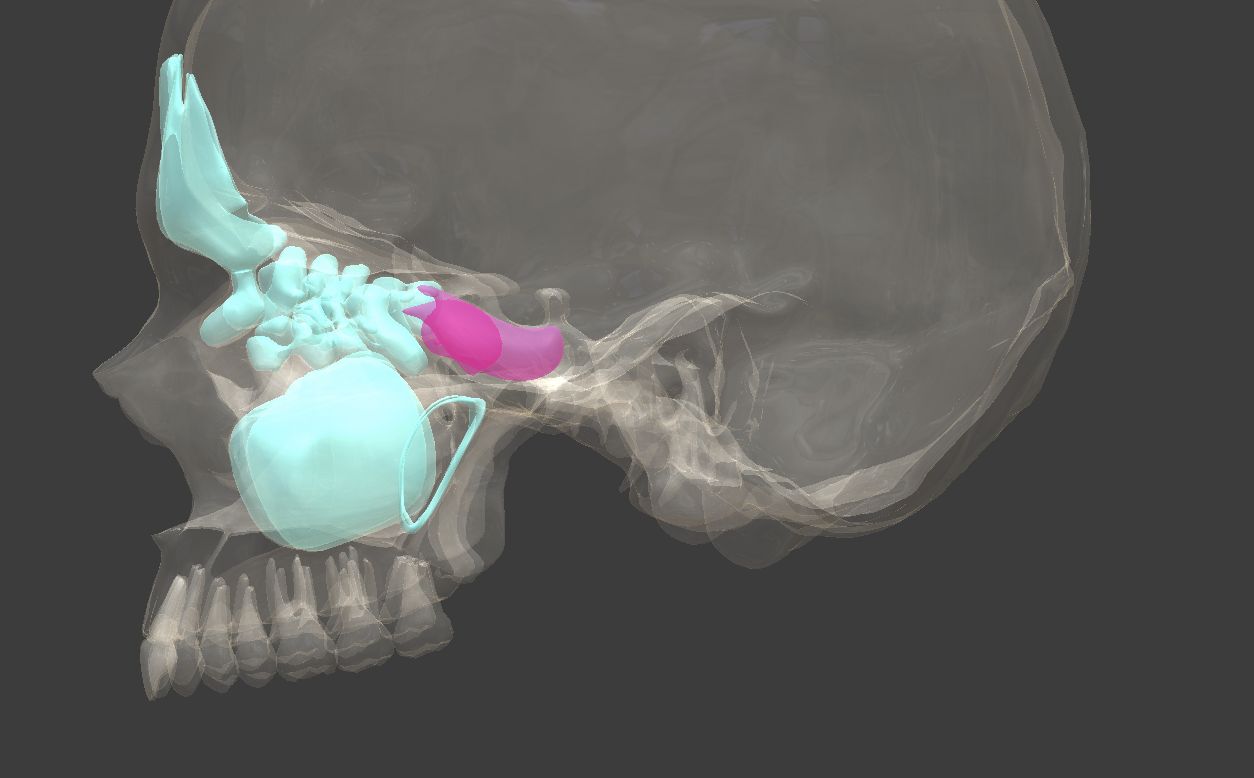
sphenoid paranasal sinus
mucous lined, air filled cavity in the sphenoid bone
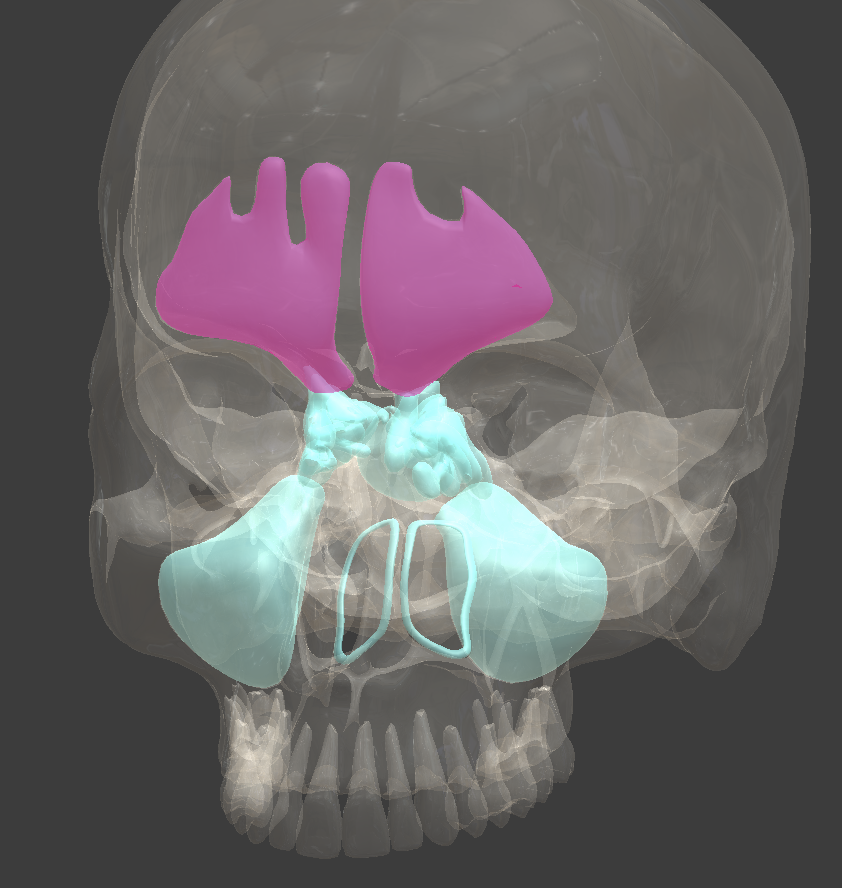
frontal paranasal sinus
mucous lined, air filled cavity in the frontal bone
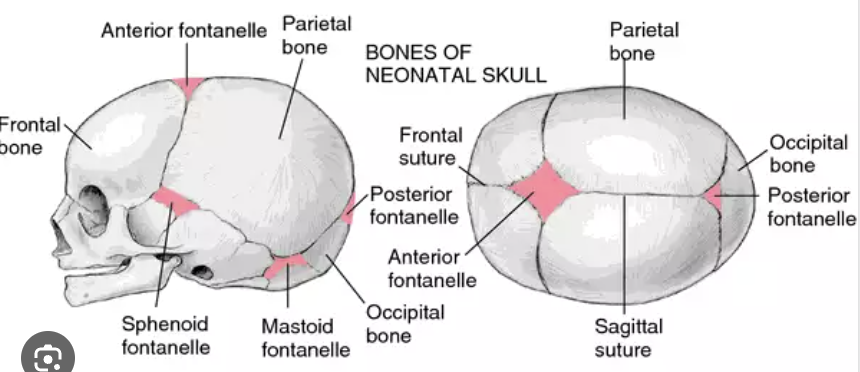
fontanelles
unossified membranes attaching bones of fetal skull
muscles of facial expression
occipitalis, frontalis, orbicularis oculi, orbicularis oris, zygomaticus major and minor, buccinator, platysma
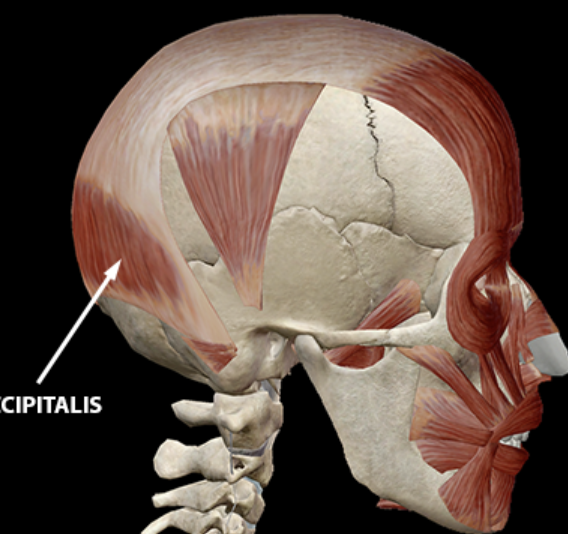
occipitalis
move scalp posteriorly and inferiorly (retracts scalp)
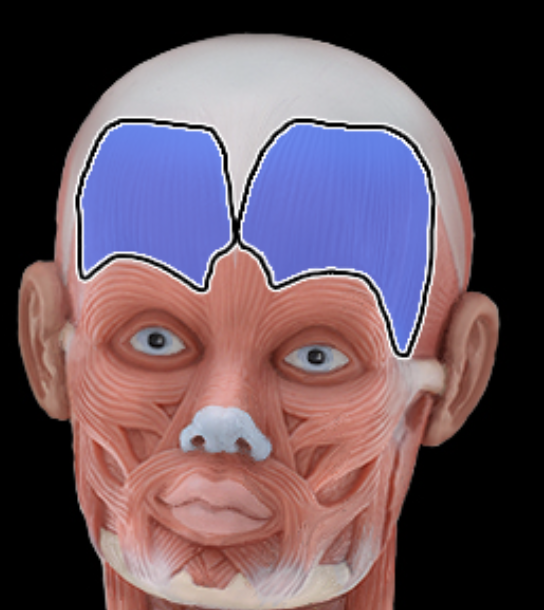
frontalis
raises eyebrows and wrinkles forehead
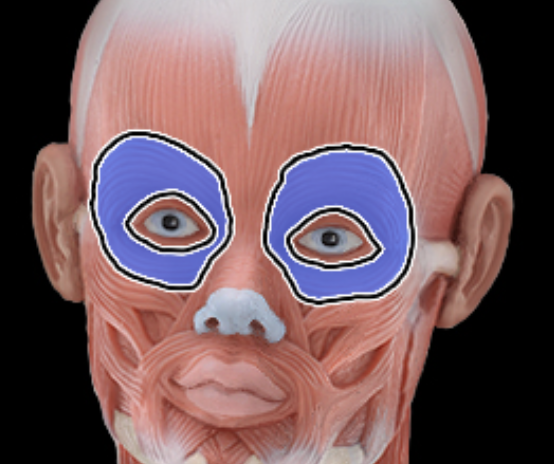
orbicularis oculi
closes eye (blinking and squinting)
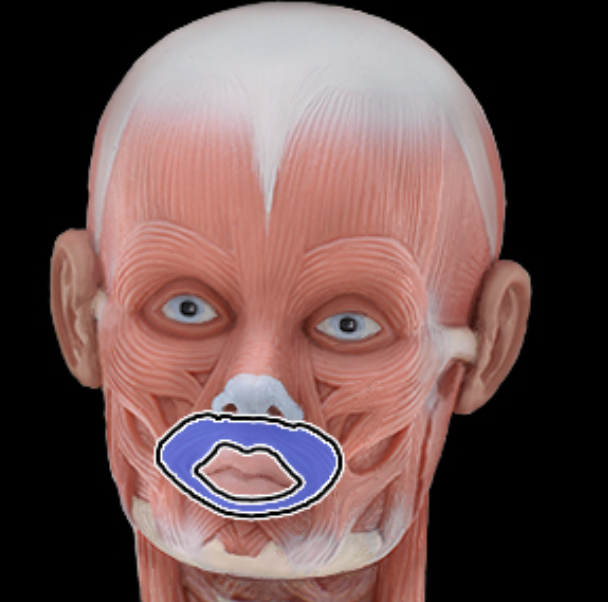
orbicularis oris
purses and protrudes lips (kissing and whistling)
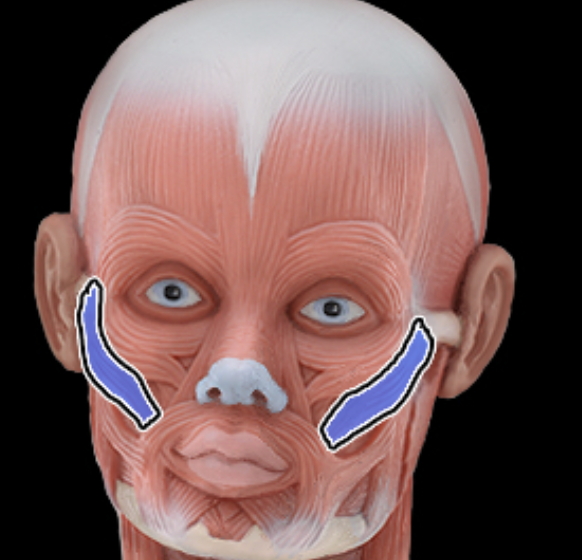
zygomaticus major
raise corner of mouth (smiling) and upper lip exposing teeth (snarling)
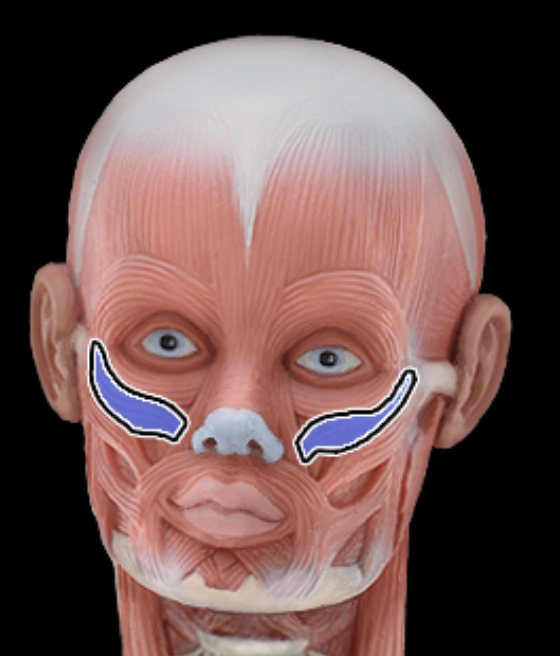
zygomaticus minor
same as zygomaticus major

buccinator
draws corners of mouth laterally; “sucks in” cheeks; assists in holding food between teeth without chewing

platysma
tenses neck skin and depresses mandible; pouting muscle
extrinsic eye muscles
superior rectus, inferior rectus, medical rectus, lateral rectus, superior oblique, inferior oblique
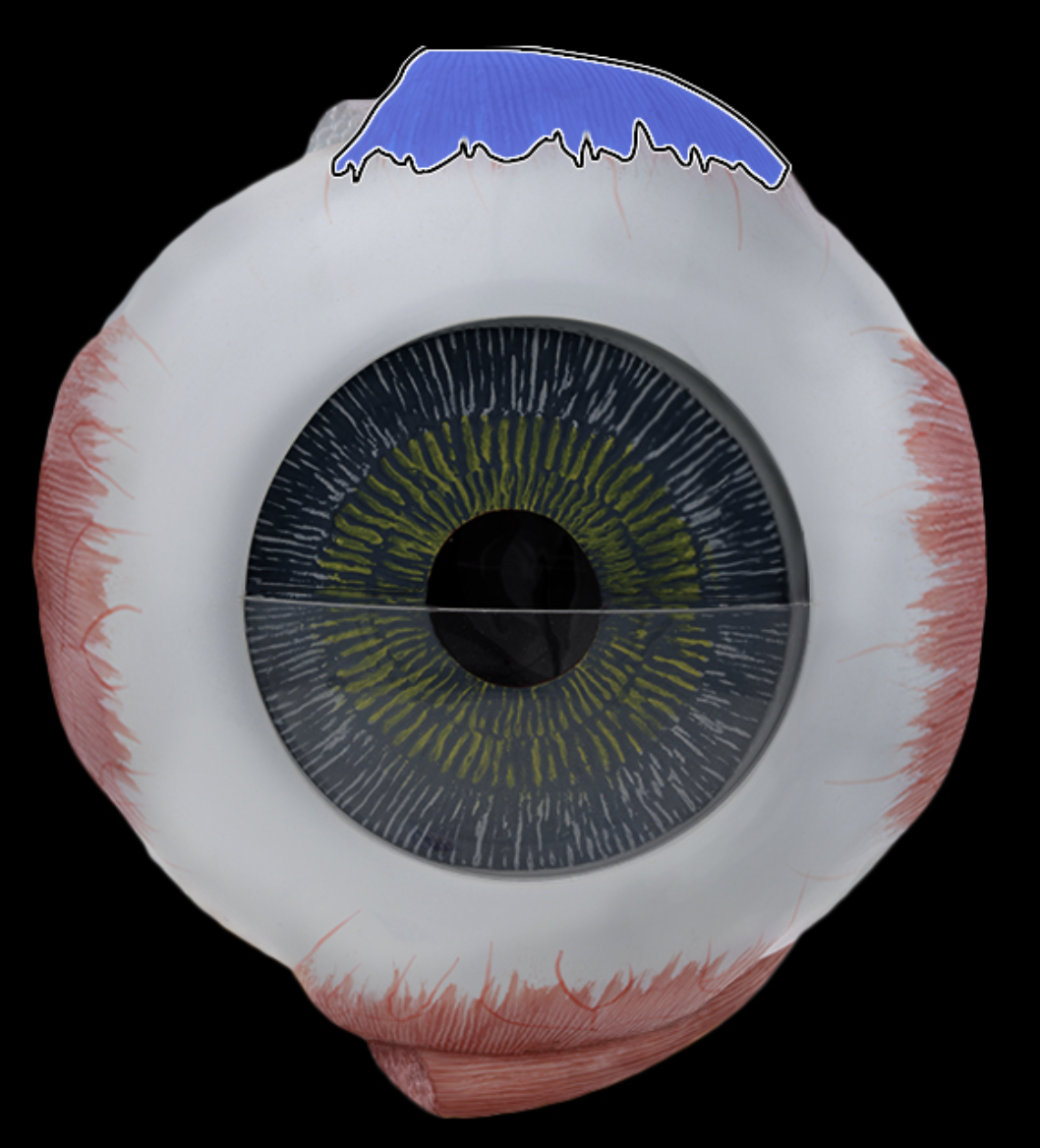
superior rectus
eye looks up
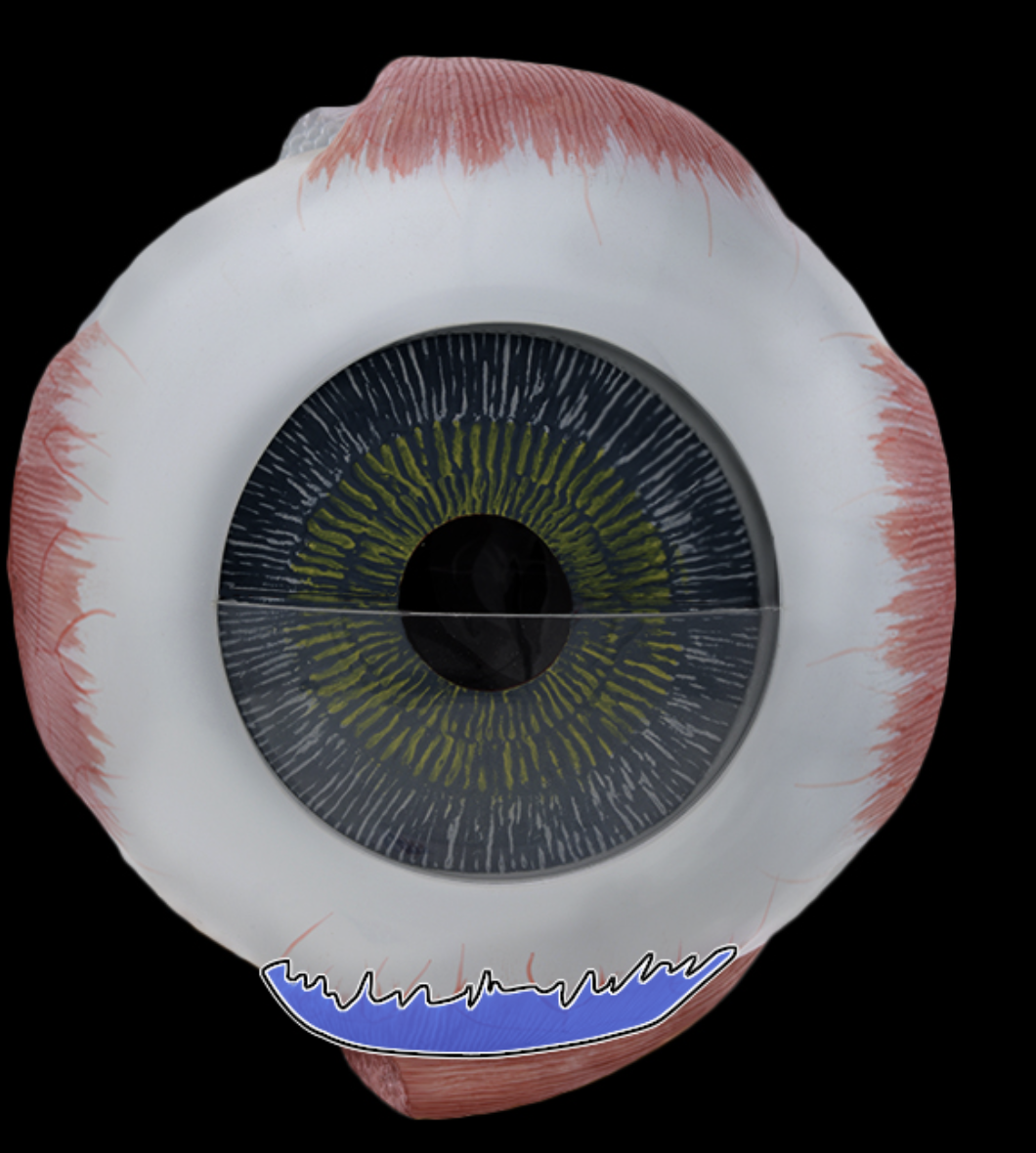
inferior rectus
eye looks down
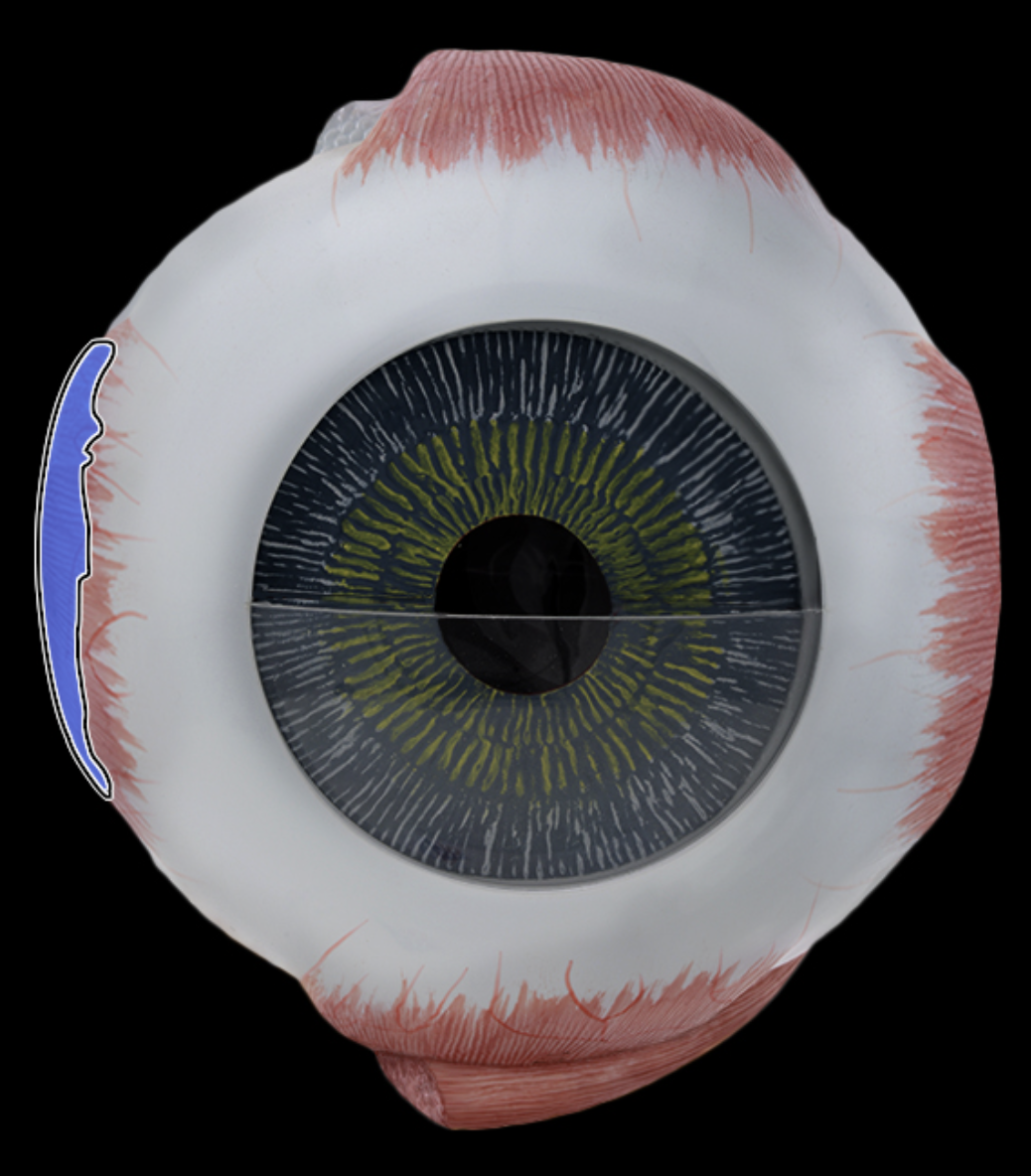
medial rectus
eye looks medially
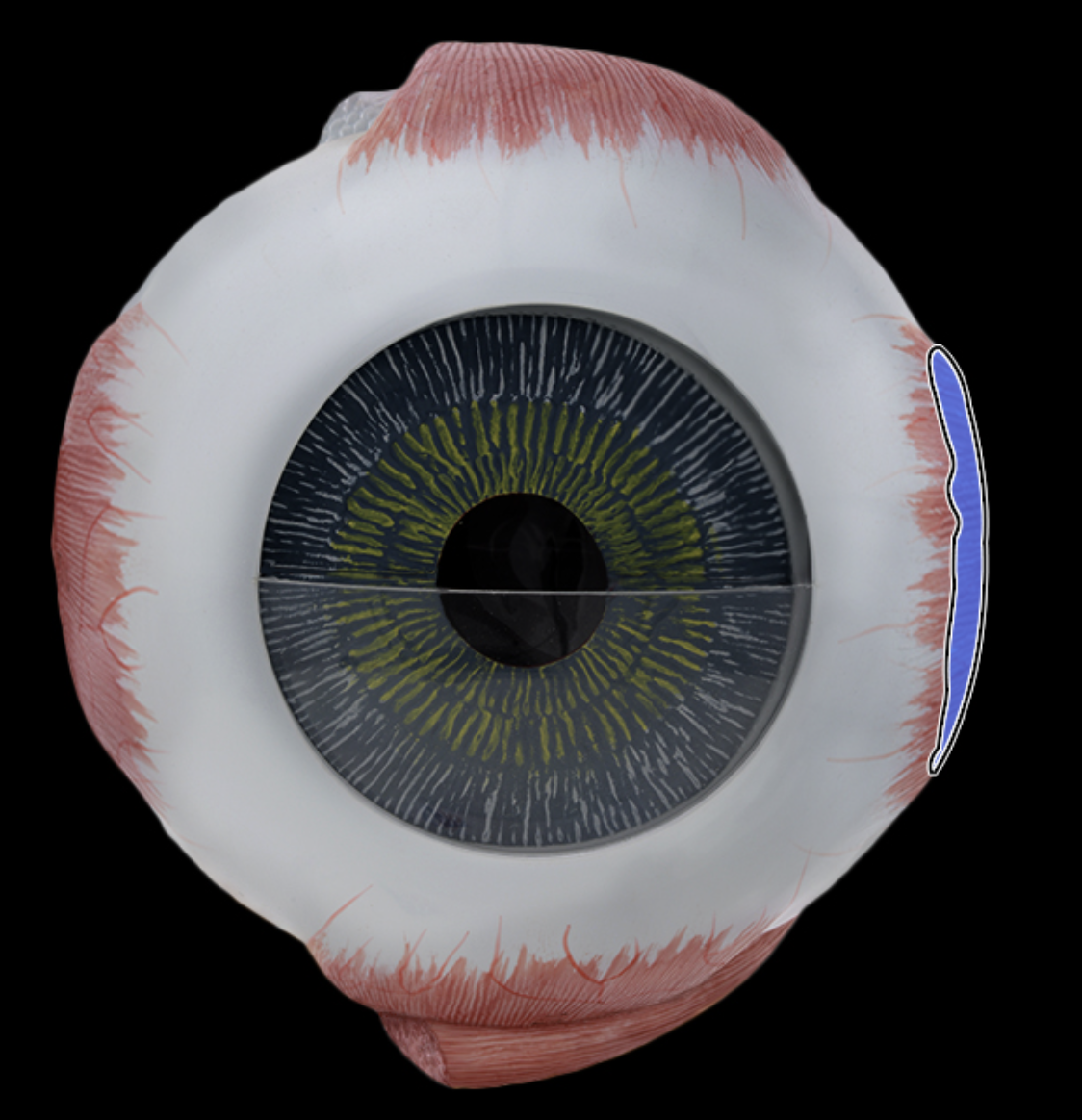
lateral rectus
eye looks laterally
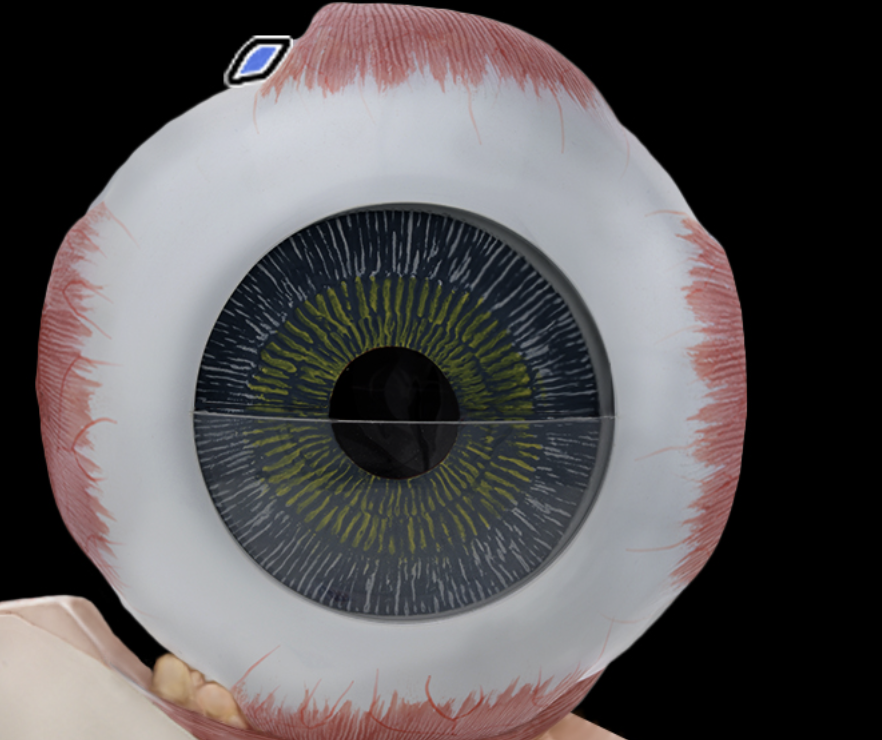
superior oblique
eye looks down and laterally
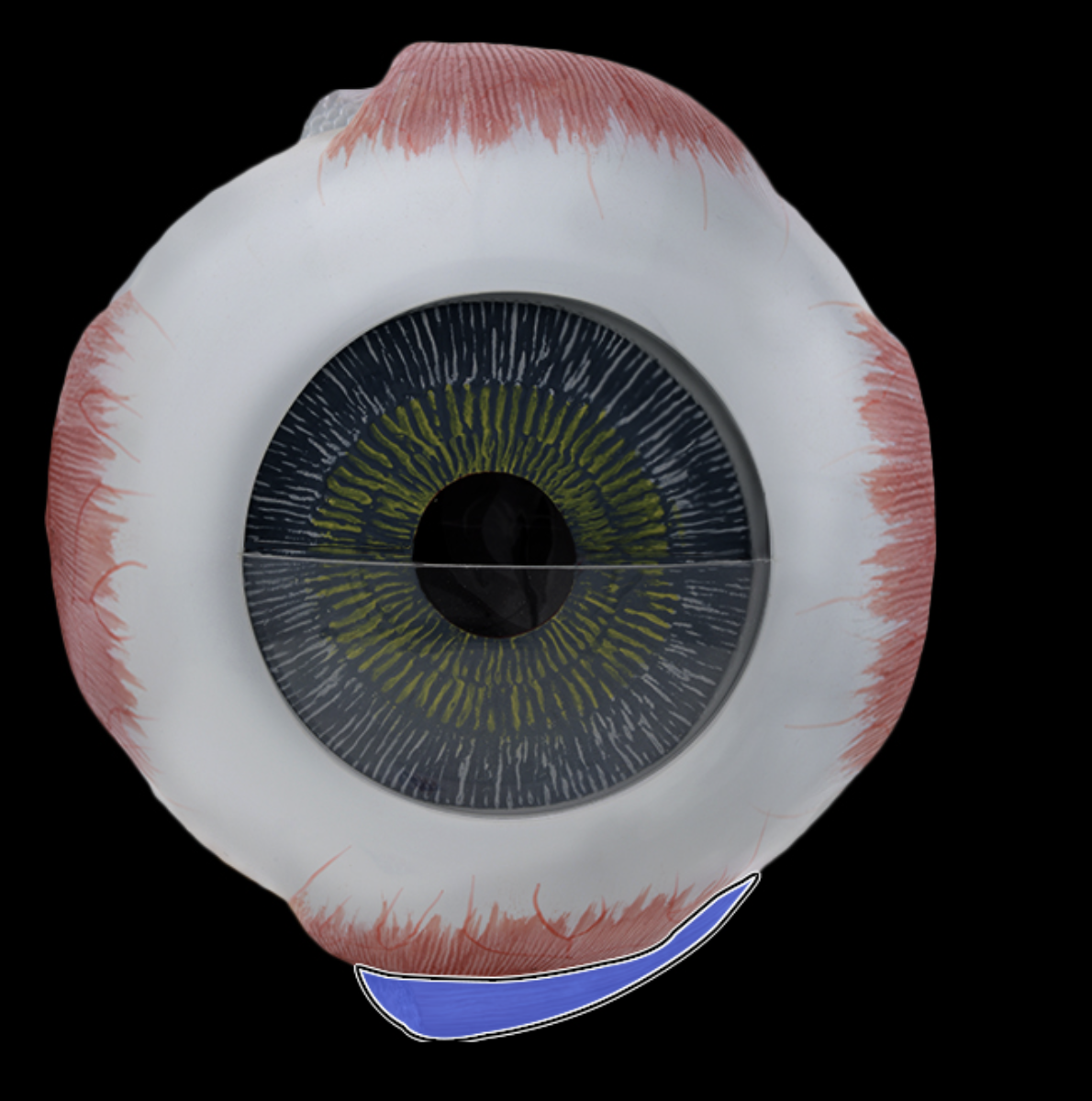
inferor oblique
eye looks up and laterally
muscles of mastication
masseter and temporalis
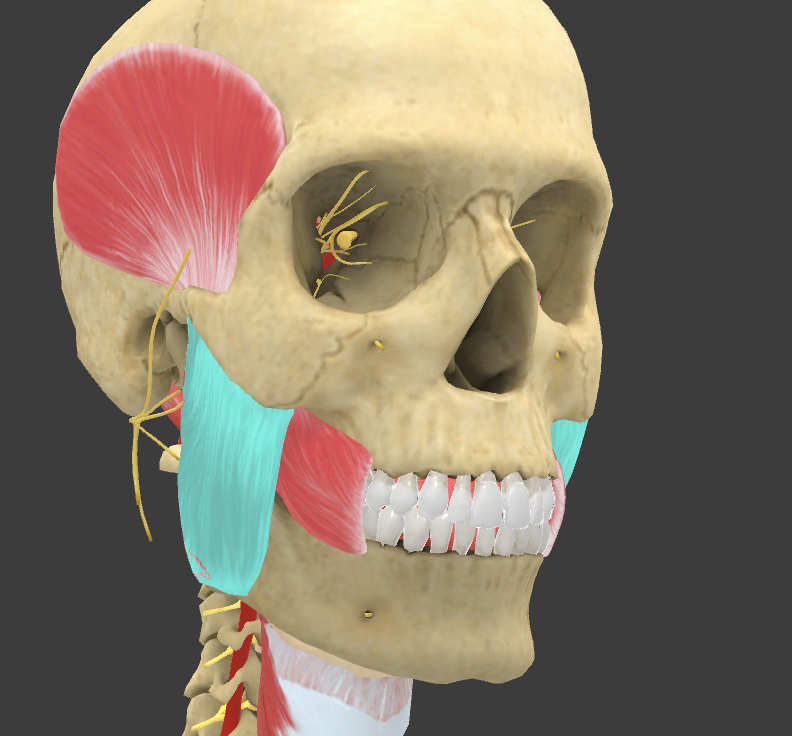
masseter
elevates mandible and closes jaw
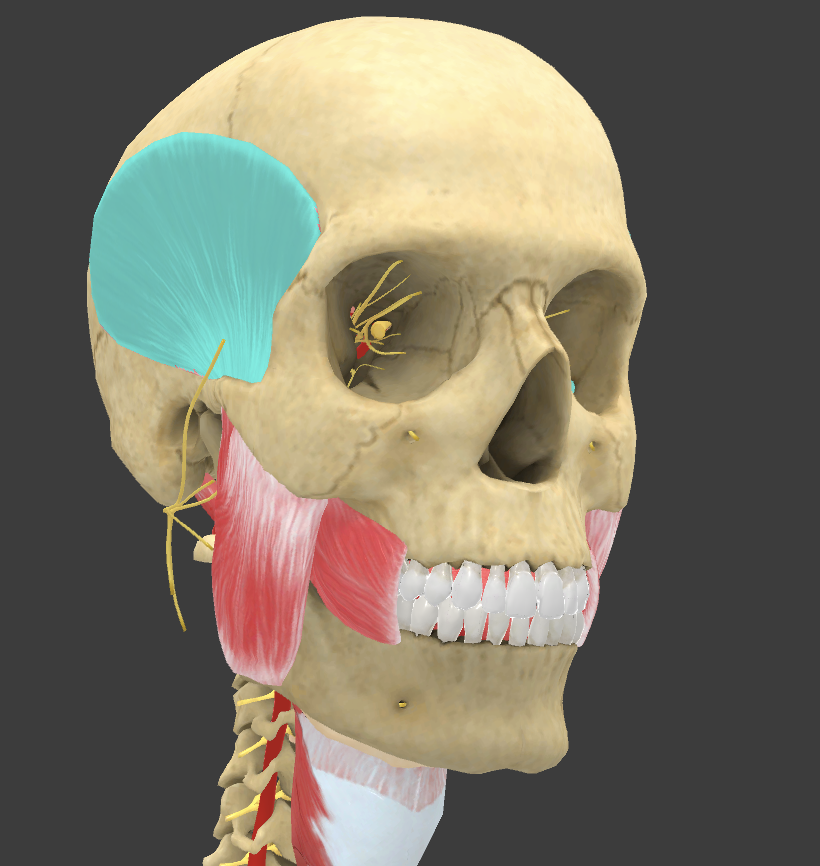
temporalis
elevates mandible and closes jaw
muscles that move tongue
genioglossus, styloglossus, hyoglossus
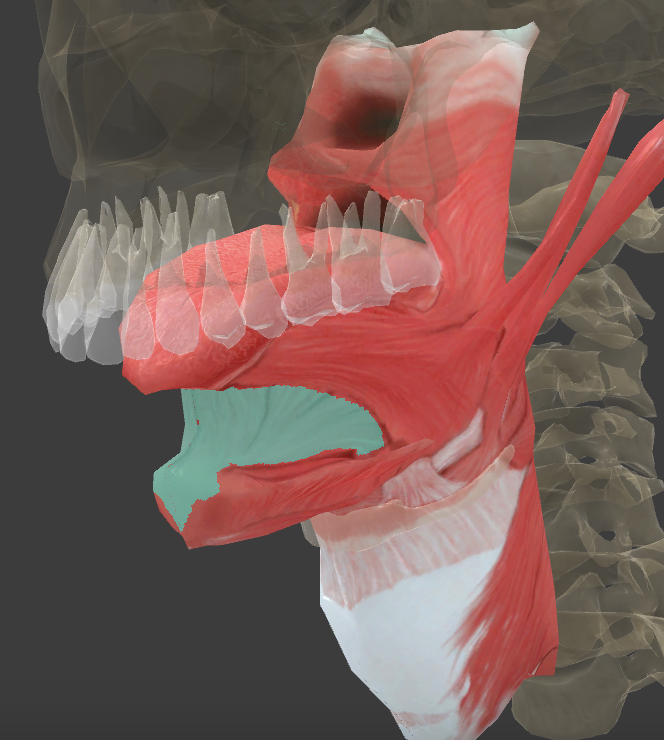
genioglossus
form internal surface of mandible to base of tongue; protracts tongue; can depress tongue